100 Must-Visit Tourist Spots
Seoul Capital Area
-
SeoulThe Five Royal Palaces of Seoul
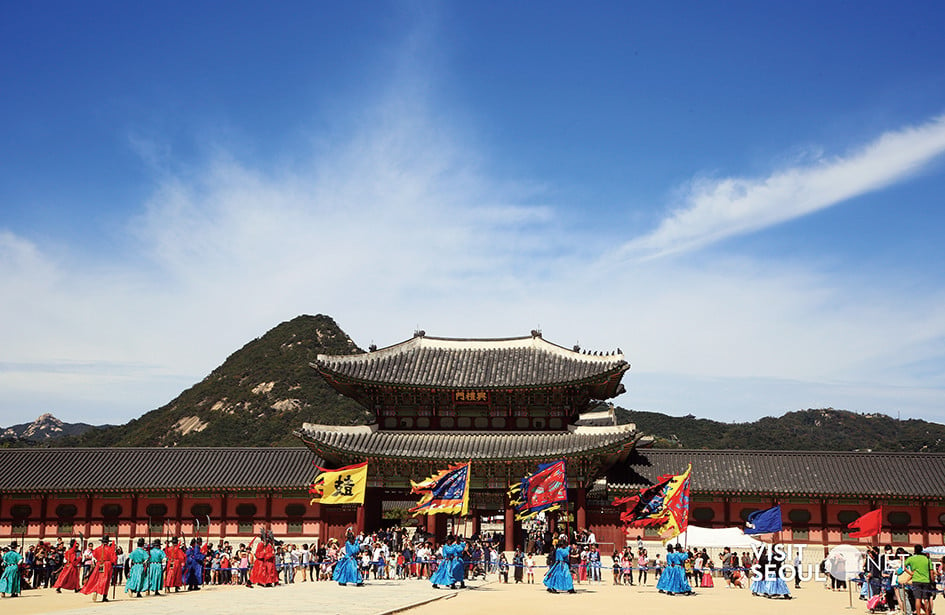
The five palaces of Seoul are royal palaces of the Joseon Dynasty and symbols of Korea’s culture and history. Each palace has its unique charms: Gyeongbokgung Palace, the royal residence; Changdeokgung Palace, a UNESCO World Heritage Site inscribed in 1997 with remarkable beauty; Deoksugung Palace, a combination of Korean aesthetics and Western architecture; Changgyeonggung Palace, now restored from the damages caused by Japanese occupation; and Gyeonghuigung Palace, humble and simple.
- Gyeongbokgung Palace: 161 Sajik-ro, Jongno-gu, Seoul / +82-2-3700-3900
- Changdeokgung Palace: 99 Yulgok-ro, Jongno-gu, Seoul / +82-2-3688-2300
- Deoksugung Palace: 99 Sejong-daero, Jung-gu, Seoul / +82-2-771-9955
- Changgyeonggung Palace: 185 Changgyeonggung-ro, Jongno-gu, Seoul / +82-2-762-4868
- Gyeonghuigung Palace: 45 Saemunan-ro, Jongno-gu, Seoul / +82-2-724-0274
-
SeoulHongik University (Hongdae) Street
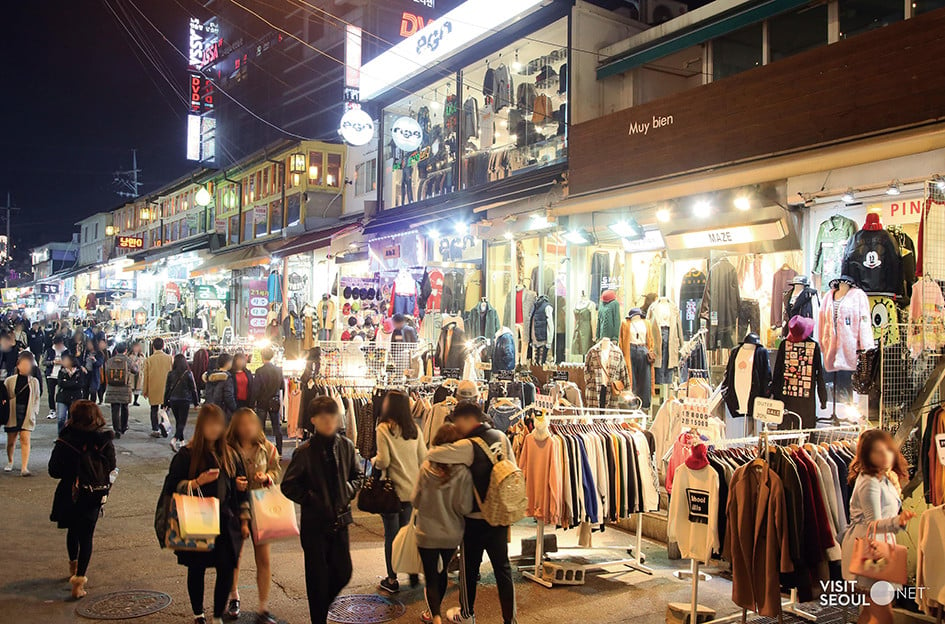
The heart of Seoul’s youth culture is this eclectic collection of cafes, restaurants, bars, clubs, art markets, galleries, and shops. Its numerous alleys wind through the area, carrying unique themes like clubbing, art, and murals (Picasso Street). Busking, performances, events, and the powerful energy of youthful freedom draw numerous youths to the area, especially on weekends.
- 160 Yanghwa-ro, Mapo-gu, Seoul
- +82-2-3153-8650
-
SeoulSeoul Forest

This interactive park is the first of its kind and has become a representative foreststructured park made in collaboration with its citizens. In spring, the cherry blossoms and tulips bloom and in summer, the ground fountain and water playground opens for everyone to enjoy. Visitors can also participate in various eco experiences at the Butterfly Garden, Deer Habitat, and Insect Garden. The Mirror Pond, Land of Giants, and ginkgo tree forest are the perfect spots for beautiful photos. There are also various cultural and experience events as well as picnics at the main grass field.
- 273 Ttukseom-ro, Seongdong-gu, Seoul
- +82-2-460-2905
-
SeoulDongdaemun Design Plaza (DDP)
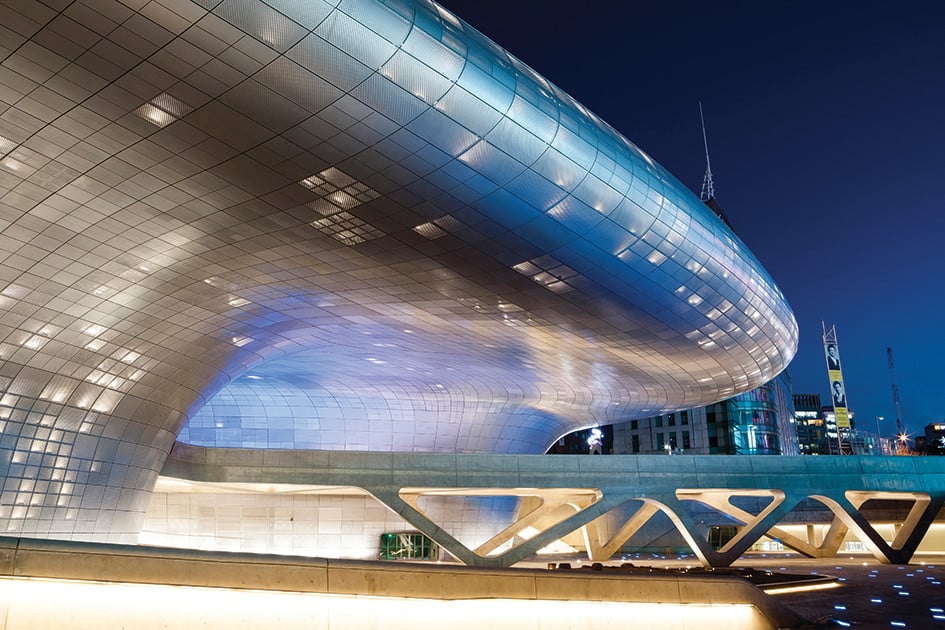
This cultural space and design platform is a hub of exhibitions, fashion shows, conferences, and events both domestic and international. Its distinct curves and mega-sized roof are a triumph of 3D asymmetrical architecture. This design, which symbolizes Dongdaemun area in the state of flux, was designed by the British Iraqi architect Zaha Hadid. The area includes Dongdaemun Market and other interesting sights.
- 281 Eulji-ro, Jung-gu, Seoul
- +82-2-2153-0000
-
SeoulSeoul Sky & Lotte World
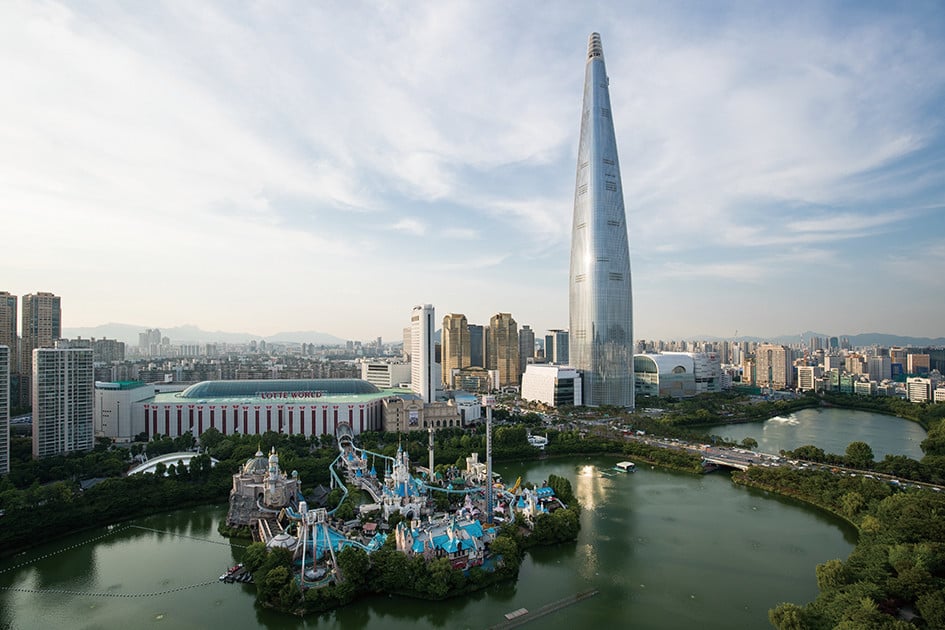
Perched from the 117th to the 123rd floors of Lotte World Tower, the tallest building in Korea and the fifth tallest globally, Seoul Sky offers a 360-degree panoramic view of Seoul from 500 meters above ground. The Sky Deck, a 478-meter-high observatory, is registered in the Guinness World Records as the world’s highest glass-floored observatory. Lotte World is a cultural attraction consisting of Lotte World Adventure (indoor theme park), Magic Island (outdoor theme park), a shopping mall, and more.
- Seoul Sky: 300 Olympic-ro, Songpa-gu, Seoul
- Lotte World: 240 Olympic-ro, Songpa-gu, Seoul / +82-1661-2000
-
SeoulN Seoul Tower
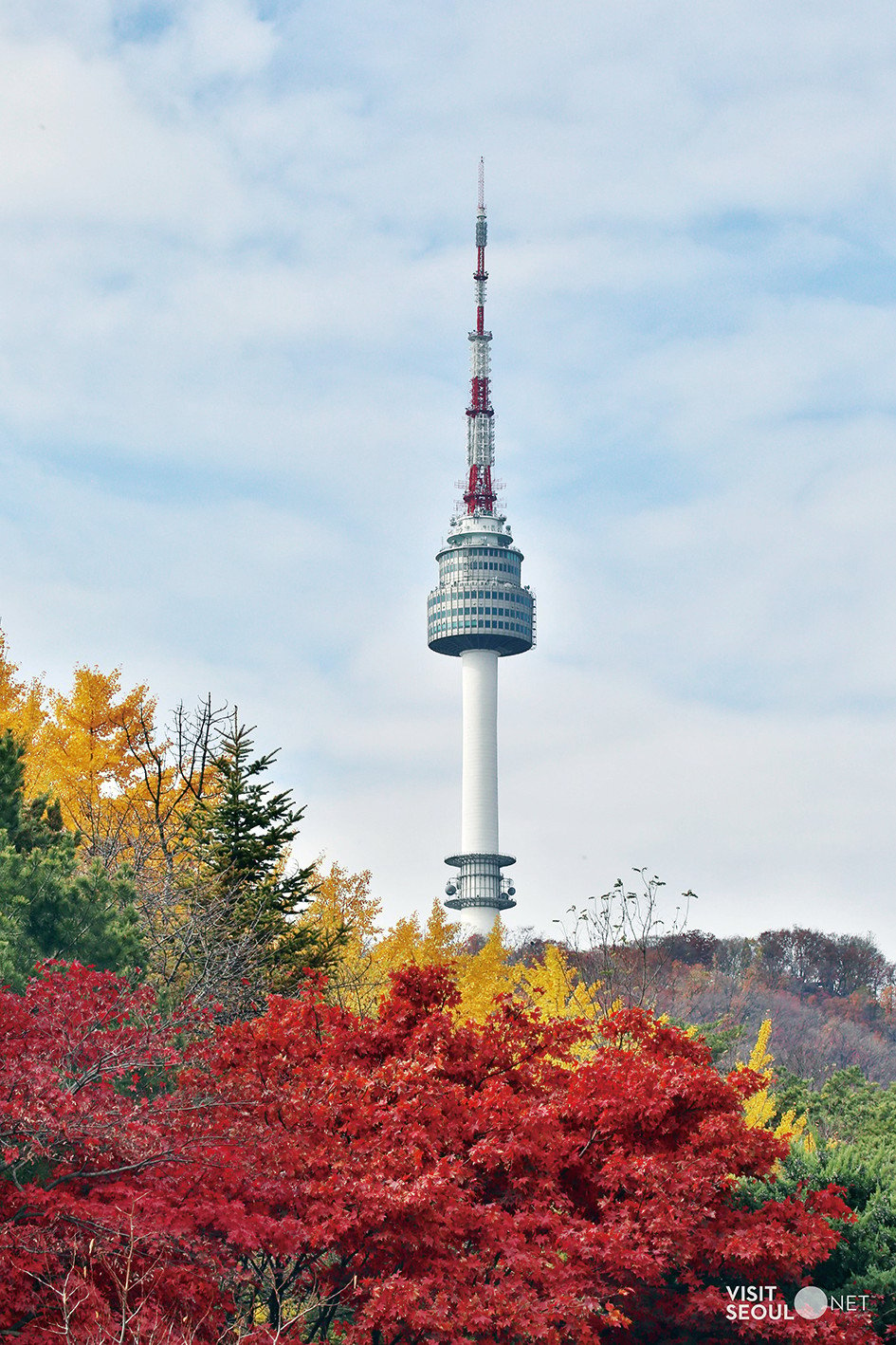
This broadcast and observation tower was opened to the public as Seoul Tower in 1980. Standing at 236.7 meters upon the 243-meter-high Namsan Mountain makes this tower 479.7 meters above sea level in total. The observation deck at the top offers a 360-degree view of Seoul and dining services. Seoul Tower Plaza refers to B1 to P4, while N Seoul Tower refers to the observatory and transmission tower. It was designated as a Seoul Future Heritage in 2018.
- 105 Namsangongwon-gil, Yongsan-gu, Seoul
- +82-2-3455-9277
-
SeoulThe Street in Front of Cheongwadae (the Blue House) & Seochon Village
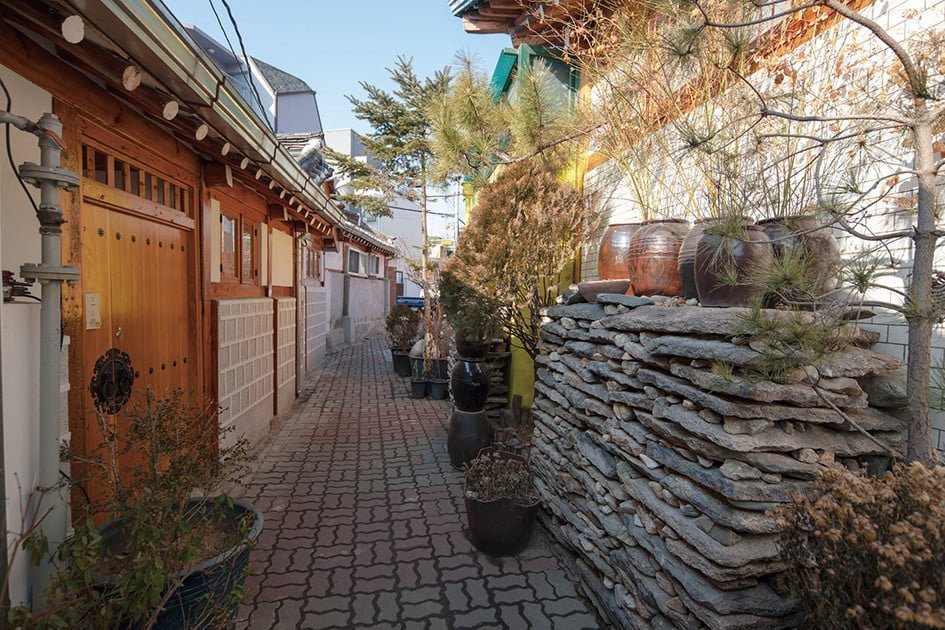
The street in front of Cheongwadae (the Blue House) leads to Cheongwadae Sarangchae, a fountain, Mugunghwa (Rose of Sharon) Hill, Yeonmugwan Hall, Daegogak Pavilion and Yeongbingwan Hall. Thick trees on both sides surround the road, so one can take a walk here while appreciating the beautiful flower beds under the shade of the trees. Seochon Village refers to a village sitting to the west of Gyeongbokgung Palace. Old and new shops and hanok buildings (traditional Korean houses) sit together in harmony.
- The Street in Front of Cheongwadae: Gungjeong-dong, Jongno-gu, Seoul / +82-2-120
- Seochon Village: 45 Pirundae-ro, Jongno-gu, Seoul / +82-2-2148-1114
-
SeoulIkseon-dong
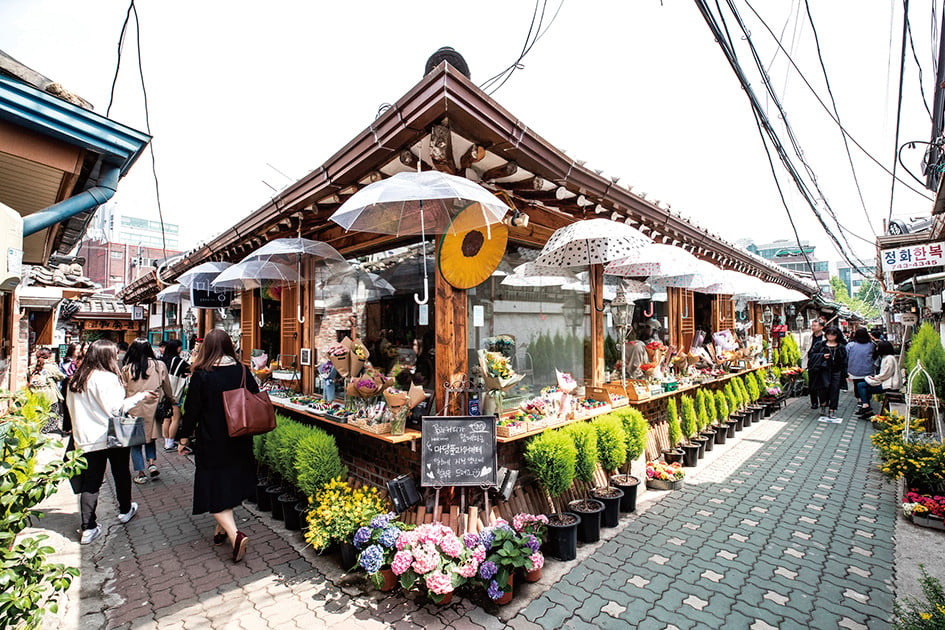
This urban hanok village was created in 1920s and 1930s as a common people residential complex. Unlike the hanok villages of Bukchon or Seochon, the houses here tend to be smaller and humbler. Today’s Ikseon-dong is a quirky collection of cafes, restaurants, and shops, mostly with retro aesthetics, and its popularity spread like a wildfire following the newtro revival among the youths.
- Ikseon-dong, Jongno-gu, Seoul
- +82-2-2148-1114
-
SeoulCOEX (Starfield)
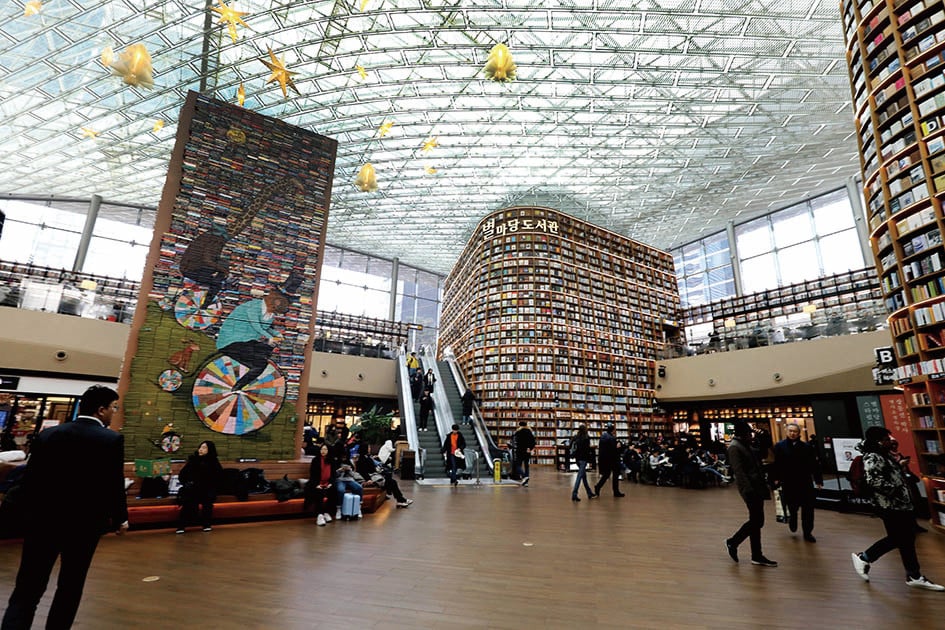
COEX is a cultural center housing shops, film theaters, an aquarium, a large bookstore, and a library. Starfield Library in particular is a beloved location for photo ops for its two-story, 13-meter-high bookstores. It is designed as an open space of communication through books, and it hosts many literature-themed cultural events.
- 513 Yeongdong-daero, Gangnam-gu, Seoul
- +82-2-6000-0114
-
IncheonOpen Port Cultural District & Incheon Chinatown (Songwol-dong Fairy Tale Village)
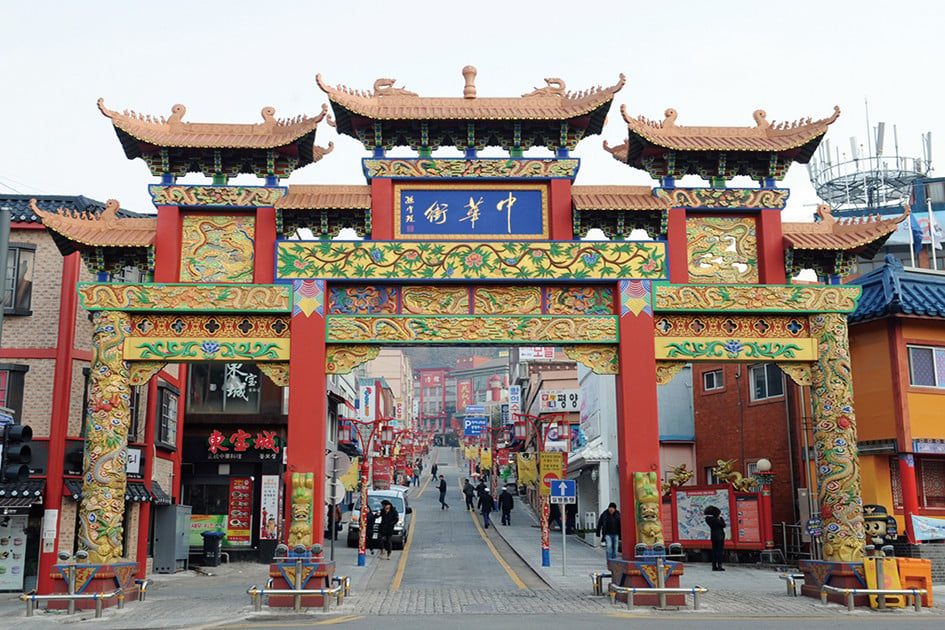
In this district, one can see remnants of the modern architecture and culture brought to Incheon when its port opened in the late 19th century. Modern buildings and sculptures built during this period can be found across the area. Plus, unique cafes, workshops, stores, and museums can also be found. Incheon Chinatown was created by Chinese immigrants, so their unique history and culture remain here. Songwol-dong Fairy Tale Village near Chinatown is full of unique buildings exuding a fairytale-like ambiance.
- Areas around Sinpo-dong, Gaehang-dong in Jung-gu, Incheon
- +82-32-760-6477
-
IncheonGoryeo City Wall Tour (Ganghwa Old Town Story Walk)
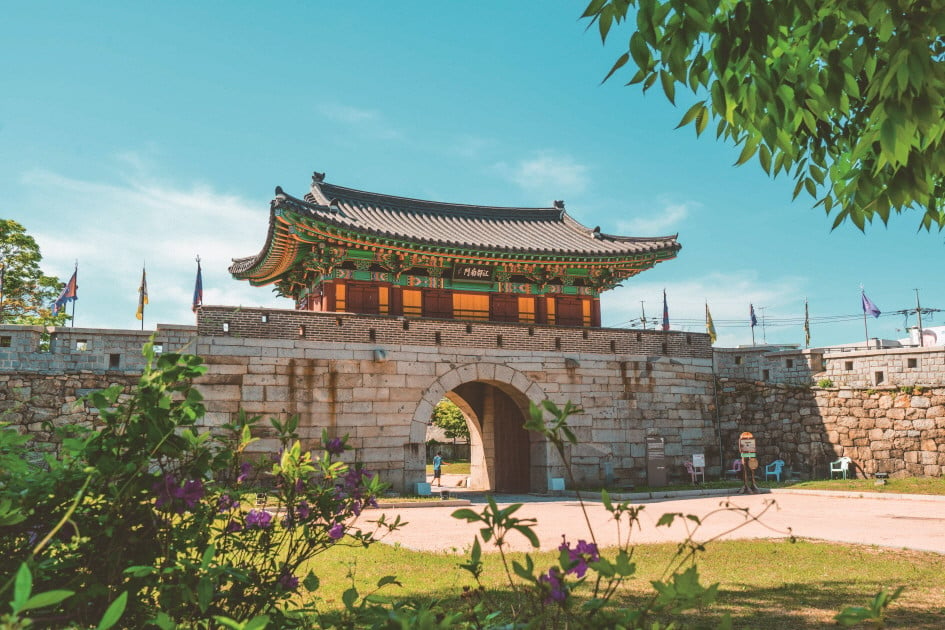
This walking tour allows one to get a glimpse into Ganghwado Island’s history, industries, and religion. There are several historical sites: Goryeo Palace Site, the only one of its kind remaining; Oegyujanggak Royal Library, which was restored after being burned down by foreign invasion in the modern era; and Ganghwa Anglican Church, the oldest traditional Korean house-style cathedral in Korea. Traces of the textile industry can be found at the Sochang Experience Center, Donggwangjikmul textile factory site, and Joyang Bangjik Café.
- Areas around Gwancheong-ri, Sinmun-ri, Namsan-ri in Ganghwa-eup, Ganghwa-gun, Incheon
- +82-32-930-3562
-
IncheonBaengnyeongdo Island & Daecheongdo Island
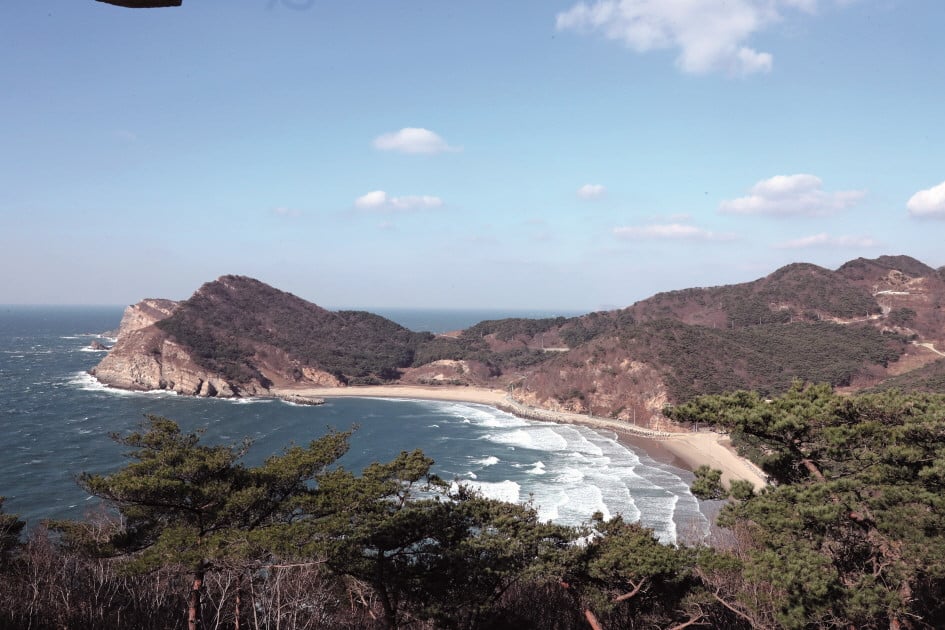
Baengnyeongdo and Daecheongdo Islands are two beautiful islands located in the northernmost area of the West Sea, where oddly shaped rocks and clean waters create magnificent views. Popular tourist destinations are Dumujin Point; Seopungbaji Cliff; Nongyeo Beach; Kongdol Beach; Sand Beach (Natural Air Field) at Sagot Cape; and Simcheonggak Pavilion overlooking Indangsu and Yeonbongbawi Rock which appeared in the ancient Korean novel Simcheongjeon. The islands are surrounded by clear waters, making them ideal fishing spots.
- Baengnyeongdo Island: Baengnyeong-myeon, Ongjin-gun, Incheon / +82-32-899-3510
- Daecheongdo Island: Daecheong-myeon, Ongjin-gun, Incheon / +82-32-899-3610
-
IncheonSongdo Central Park
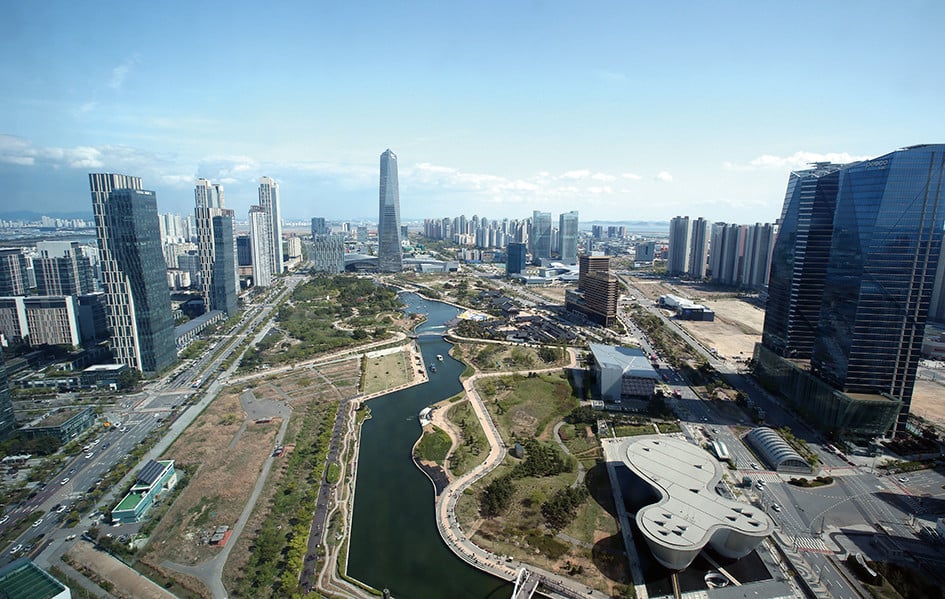
Songdo Central Park looks quite exotic thanks to Korea’s first seawater canal and green spaces that are surrounded by high-rise buildings. The Trail Garden, the Terrace Garden, and the hanok village line the artificial water canal. One can sail along the artificial canal in a water taxi, canoe, or boat. In addition, an observatory in the IFEZ Promotion Center offers an expansive view of Songdo Central Park, Incheondaegyo Bridge, and the Songdo International Business District.
- 160 Convensia-daero, Yeonsu-gu, Incheon
- +82-32-456-2860
-
Gyeonggi-do Suwon Hwaseong Fortress
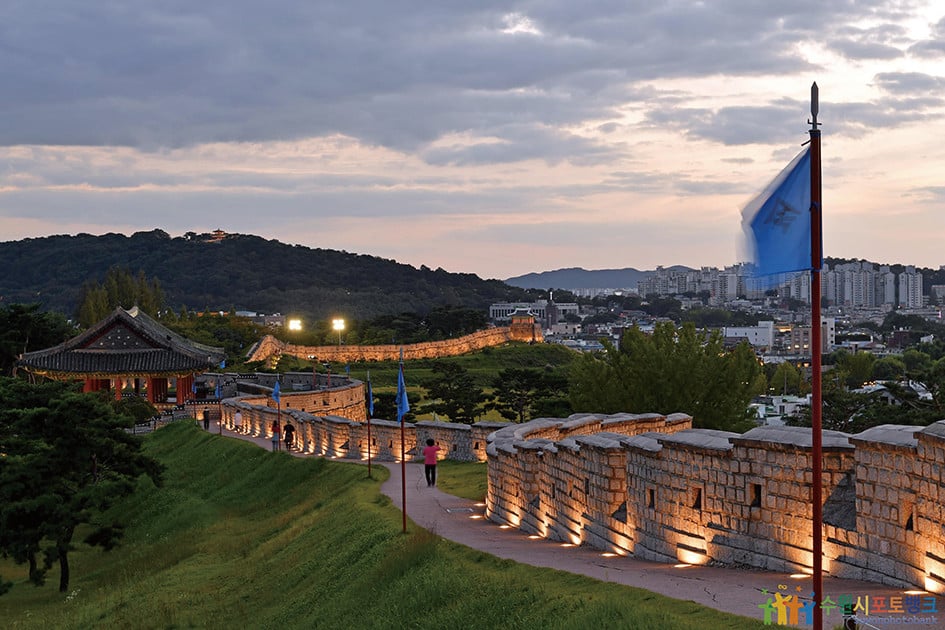
This planned city, built during the reign of King Jeongjo of Joseon with cuttingedge technology and knowledge of that time, is considered the pinnacle of Korean fortress construction. Suwon Hwaseong Fortress was designated as a Historic Site in 1963, and was inscribed as a UNESCO World Heritage in 1997. The Construction Records of Hwaseong Fortress, which documents the entire construction process of the fortress, made the restoration of Suwon Hwaseong Fortress possible, and it was also inscribed as a UNESCO's Memory of the World.
- 1-2 Jangan-dong, Paldal-gu, Suwon-si, Gyeonggi-do
- +82-31-228-4672
-
Gyeonggi-doKorean Folk Village
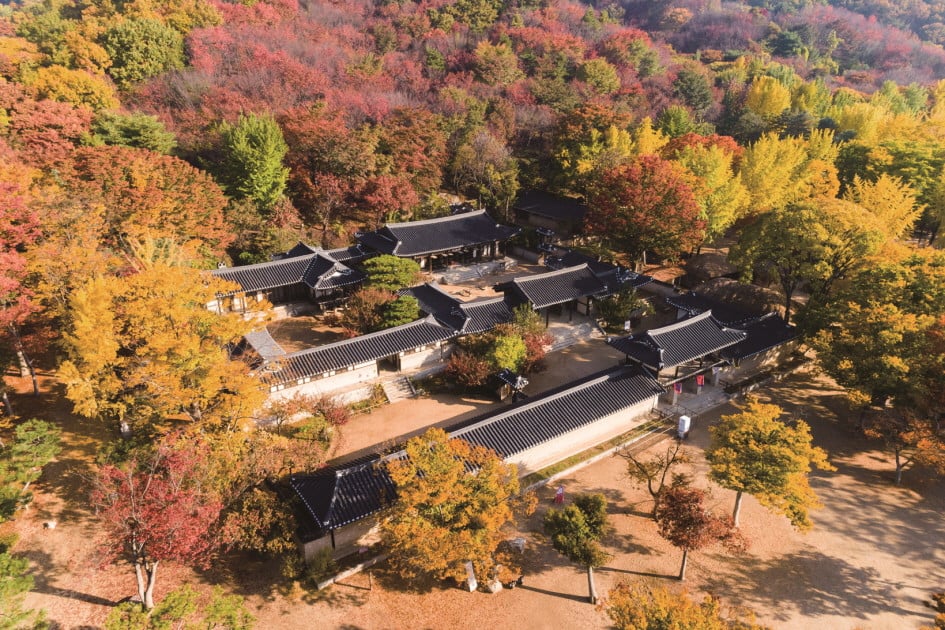
This theme park presents the traditional lifestyle and culture of Korea, in a Joseon-era village formed with restored or relocated houses from throughout Korea. It is made up of a local government office, educational buildings, traditional medicine shop, Buddhist and shamanist temples, and a commercial district that includes a souvenir shop and permanent exhibition spaces.
- 90 Minsokchon-ro, Giheung-gu, Yongin-si, Gyeonggi-do
- +82-31-288-0000
-
Gyeonggi-doEverland
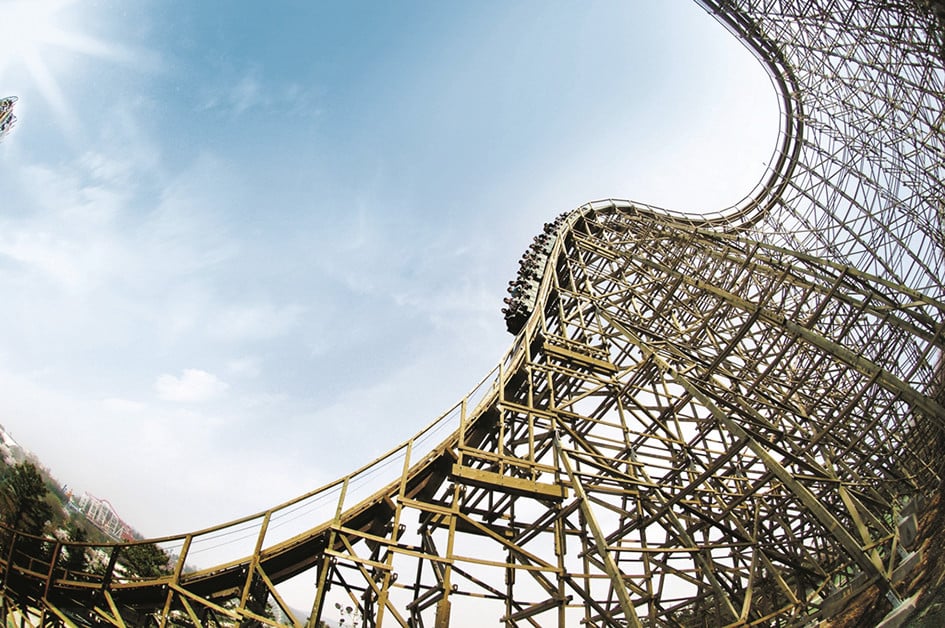
Everland offers a suite of interesting sights, from theme park attractions and animals in Zootopia to Lost Valley, the largest ecological safari in Korea; and Plantopia, a garden of nature. It also hosts seasonal events like Cherry Blossom Festival, Tulip Festival, Rose Festival, Summer Holiday, and Halloween, sometimes with flowers, sometimes with music, but always with fun.
- 199 Everland-ro Pogok-eup, Cheoin-gu, Yongin-si, Gyeonggi-do
- +82-31-320-5000
-
Gyeonggi-doSeoul Land

Seoul Land has gained popularity as a land of adventures and dreams. Its attractions are organized by themes, such as the World Plaza, Tomorrow Land, Character Town, and Adventure Land. There are about 50 rides, all inspired by Korean animation characters. The amusement park runs a sled slope and a fishing spot in winter. At night, Seoul Land turns into Luna Park decorated with splendid lights.
- 181 Gwangmyeong-ro, Gwacheon-si, Gyeonggi-do
- +82-2-509-6000
-
Gyeonggi-doGwangmyeong Cave

This is a former mining shaft that opened during the Japanese colonization in 1912, yielding gold, silver, bronze, and zinc until its closure in 1972. It is 7.8 kilometers long, and 275 meters in depth. The city of Gwangmyeong purchased this area in 2011 and created a "Miracle of an Abandoned Mine." Today, it is a cave theme park hosting nearly a million visitors each year, offering experience programs, performances, and regular exhibitions.
- 142 Gahak-ro 85beon-gil, Gwangmyeong-si, Gyeonggi-do
- +82-70-4277-8902
-
Gyeonggi-doImjingak Pavilion and Paju DMZ

Imjingak Pavilion symbolizes the tragic history of the Korean War and the aspiration for a peaceful reunification of the Korean people. It is home to Mangbaedan Altar, Imjingak Pyeonghwa Nuri Park, Imjingak Peace Gondola, Freedom Bridge, the Korean Peninsula Ecological Peace Tourism Information Center, and the National Memorial for Abductees during the Korean War. Paju DMZ, which was the venue of the Armistice Agreement and the Inter-Korean Summit, is also home to the 3rd Tunnel, Dora Observatory, and Panmunjeom.
- 148-53 Imjingak-ro Munsan-eup, Paju-si, Gyeonggi-do
- +82-31-953-4744
-
Gyeonggi-doAnseong Farmland
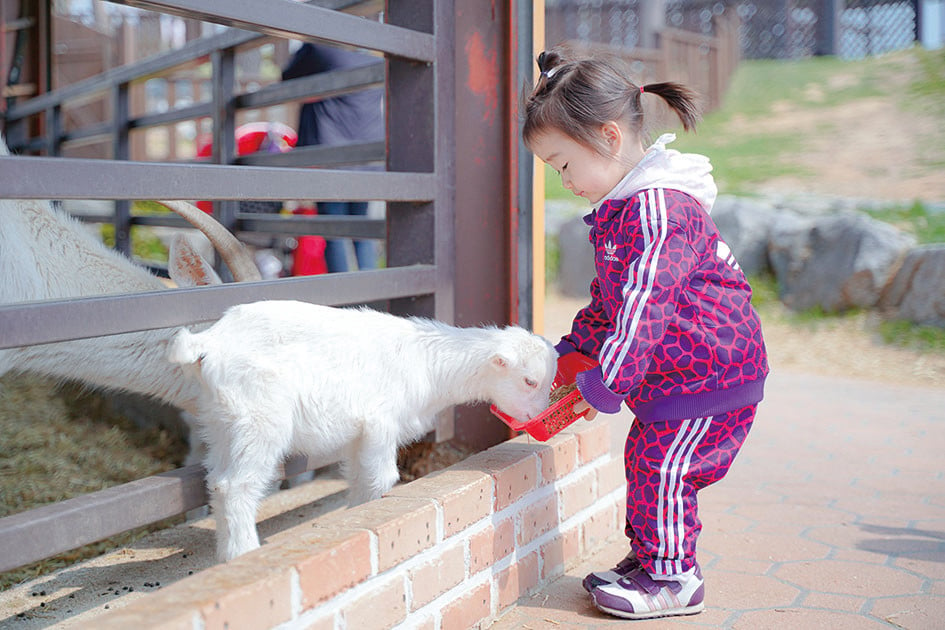
As the largest agro-livestock theme park in Korea, Anseong Farmland allows visitors to see and feed various domestic animals close at hand. Visitors can also enjoy a livestock show, theme zones, horseback riding, kart racing, and an amusement park. The theme park’s landscape features rye in spring, sunflowers and lavender in summer, and cosmos flowers in fall. It is easily accessible from the Seoul metropolitan area since it is only 10 minutes by car from Anseong IC on the Gyeongbu Expressway.
- 28 Daesindu-gil Gongdo-eup, Anseong-si, Gyeonggi-do
- +82-31-8053-7979
-
Gyeonggi-doDumulmeori
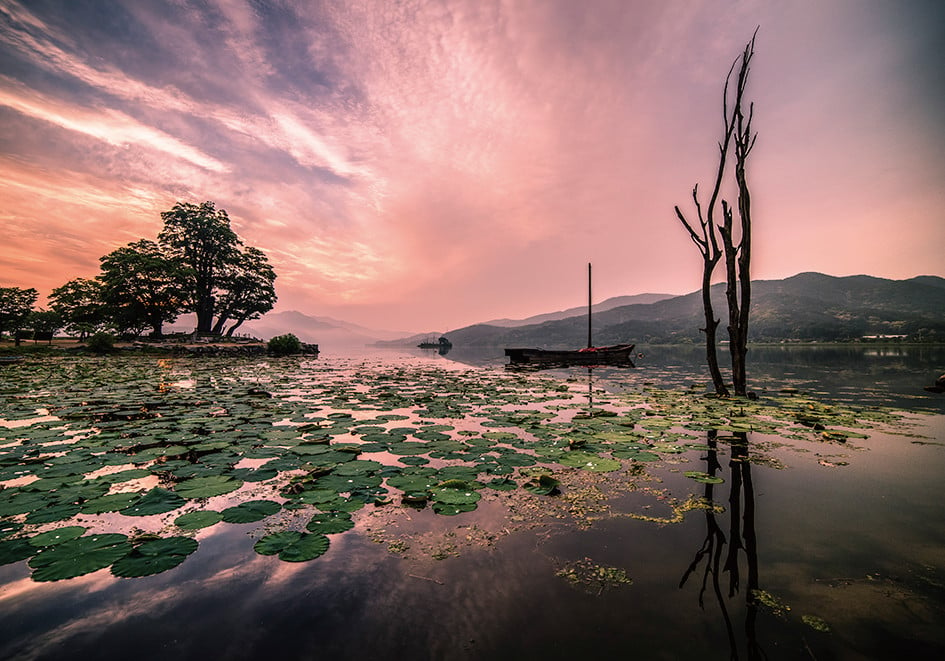
Dumulmeori is the point of confluence between Bukhangang River from Geumgangsan Mountain, and Namhangang River from Geumdaebong Peak, Gangwon-do Province. The two rivers meet to form the Hangang River. It is a beloved tourist site for its exceptional scenery, from the early morning mist to the old-fashioned yellow hemp sailboat and a 400-year-old Zelkova tree, documented well by numerous films and TV shows. It is also famous for its winter scenery and sunset. The nearby Semiwon Garden became the 1st Regional Garden designated by Gyeonggi-do in June 2019.
- Area around 145 Dumulmeori-gil Yangseo-myeon, Yangpyeong-gun, Gyeonggi-do
- +82-31-775-8700
-
Gyeonggi-doHeyri Art Valley
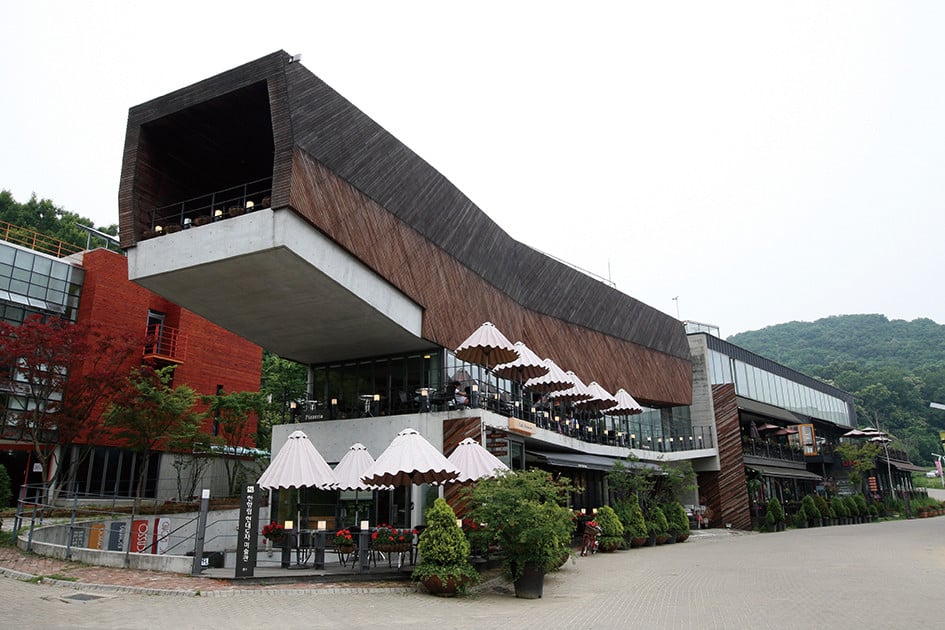
This was the first private art village to be established in Korea, designed by a collective of 380 artists who gathered here in the 1990s. Today, it hosts museums, galleries, small theaters, workshops, and other working spaces, as well as restaurants, cafes, and art shops for visitors. Its popularity comes from its quirky and beautiful architecture, its unique atmosphere, and a large variety of instructions and experience programs on offer.
- 82-105 Heyrimaeul-gil Tanhyeon-myeon, Paju-si, Gyeonggi-do
- +82-31-946-8551
-
Gyeonggi-doJarasum Island

Chosen as one of the 100 Must-Visit Nighttime Tourist Spots in 2020, Jarasum Island is a major ecological tourist spot in Gapyeong. The island is full of things to enjoy throughout the year. Seodo (West Island) is a mecca for campers, where Camping et de Caravaning is held. Dongdo (East Island) is the venue for the Jarasum International Jazz Festival. Namdo (South Island) has a waterside park where a flower garden festival is held in both spring and summer.
- 22 Daljeon-ri Gapyeong-eup, Gapyeong-gun, Gyeonggi-do
- +82-31-580-4630
-
Gyeonggi-doJaeinpokpo Falls Park

One of the most representative tourist destinations in Yeoncheon is Jaeinpokpo Falls Park, which features a picturesque view created by the Hantangang River. The waterfall stands at the end of a ravine made of basalt columnar joints and is the most beautiful among the Nine Sights of Yeoncheon. The 18-meter waterfall falls into a pool that is 30 meters wide and 100 meters long. The contrast between the white foamed water and the light green pool is quite beautiful.
- San21 Gomun-ri, Yeoncheon-gun, Gyeonggi-do
- +82-31-839-2277
Gangwon-do Area
-
Gangwon-doNami Island

This resort is known for its beautiful scenery across the four seasons. To many visitors both domestic and international, the island is best known for its appearance in the popular TV show Winter Sonata. The main draw of Nami Island is its forest trails, ranging from ginkgo to nut pine, birch, reed, and its most famous sight, Metasequoia Road. Other attractions include the Picture Book Library, The Song Museum, as well as hotels and restaurants.
- 1 Namiseom-gil Namsan-myeon, Chuncheon-si, Gangwon-do
- +82-31-580-8114
-
Gangwon-doChuncheon Samaksan Mountain Lake Cable Car

This 3.61-kilometer cable car, the longest in Korea, crosses Uiamho Lake to connect Samcheon-dong and Samaksan Mountain. The lower station of the cable car has a convenience facility where passengers can rest while overlooking the lake. The other station on the mountain offers a panoramic view of downtown Chuncheon. The cable car’s crystal cabins with transparent floors are quite popular. Passengers can enjoy different views depending on the time and season.
- 245 Sports town-gil, Chuncheon-si, Gangwon-do
- +82-33-250-5403
-
Gangwon-doGanhyeon Tourist Area (Sogeumsan Grand Valley)
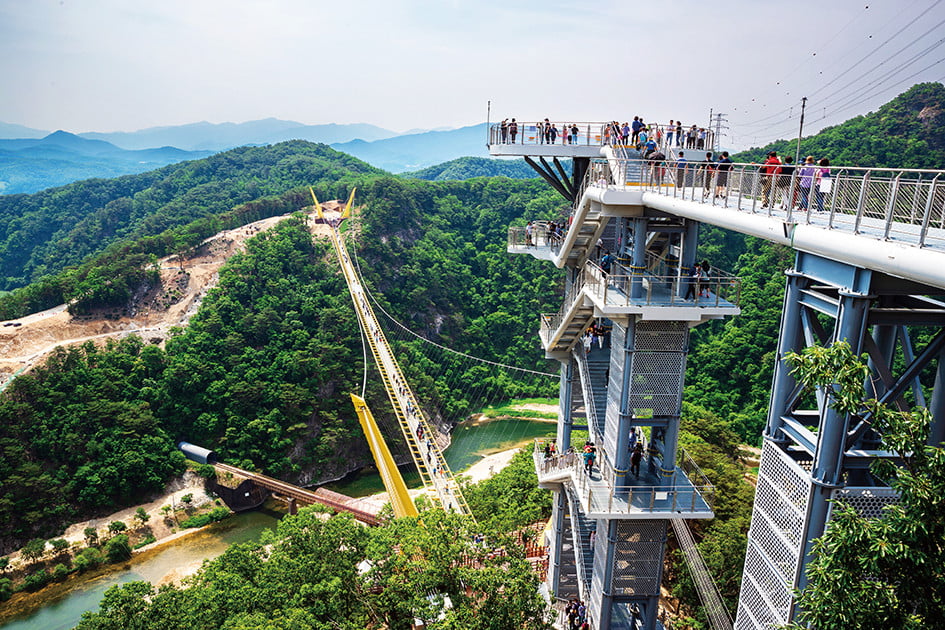
The Ganhyeon Tourist Area boasts superb natural landscapes thanks to the Seomgang River, the white sandy beaches, and the oddly shaped rocks and cliffs of Samsancheon Valley. One can take a 2-hour course that travels to Sogeumsan Suspension Bridge and Sogeum Jando Trail along the cliff of Sogeumsan Mountain; a sky tower overlooking the Ganhyeon Tourist Area; and Ulleongdari Bridge, a suspension pedestrian bridge. At night there is the beautiful Night of Light Show, featuring splendid lights and a musical fountain.
- 12 Sogeumsan-gil Jijeong-myeon, Wonju-si, Gangwon-do
- +82-33-749-4860
-
Gangwon-doMuseum SAN

Museum SAN, designed by the master architect Tadao Ando, is located in the 275-meter-high mountain . It consists of the Flower Garden, Water Garden, Stone Garden, and a permanent exhibition of the works of James Turrell. The name SAN symbolizes the museum’s pursuit of harmony between Space, Art, and Nature.
- 260 Oak valley 2-gil Jijeong-myeon, Wonju-si, Gangwon-do
- +82-33-730-9000
-
Gangwon-doGangneung Coffee Street

This is one of the most famous places in Anmok Beach—a seaside street full of cafes facing the sea. The street has a rather humble beginning which originated from coffee vending machines that lined the beach in the 1980s. After that, cafes began to establish their foothold here, culminating in today’s specialist coffee culture.
- Area around 17 Changhae-ro 14beon-gil, Gangneung-si, Gangwon-do
- +82-33-642-8692
-
Gangwon-doDojjaebigol Sky Valley & Haerang Observatory

Dojjaebigol Sky Valley is known for its splendid nightscape and unique facilities, such as the Sky Walk (59 meters above sea level), the Giant Slide, and the Sky Cycle. Haerang Observatory, a pedestrian bridge on the sea, is shaped like a dokkaebi (traditional Korean goblin) bat. It is a romantic spot to listen to the ocean waves and smell the sea breeze, while enjoying the nice ocean view facing Mukho Port.
- 13-48 Mukhojin-dong, Donghae-si, Gangwon-do
- +82-33-534-6955
-
Gangwon-doMureunggyegok Valley

Mureunggyegok Valley is a historical tourist site spanning approximately 4 kilometers from Hoamso Pond to Yongchupokpo Falls. The valley has the nickname mureung dowon, meaning a beautiful place where Taoist hermits live. Poems written by various renowned Korean poets are carved into the 5,000 ㎡ Mureungbanseok Rock. Visitors can enjoy beautiful cherry blossoms in spring, and autumn leaves in fall.
- 538 Samhwa-ro, Donghae-si, Gangwon-do
- +82-33-539-3700
-
Gangwon-doDaegwallyeong

Daegwallyeong is such a beautiful plateau that Koreans have said even clouds rest here. The area was the main venue for the PyeongChang 2018 Winter Olympics. One can enjoy exotic views of the wide green plains with gigantic windmills in summer and beautiful snowscapes in winter. The area is home to large-scale resorts, such as Yongpyong Resort and Alpensia Resort, making it a popular location throughout the year.
- Daegwallyeong-myeon, Pyeongchang-gun, Gangwon-do
- +82-33-330-2799
-
Gangwon-doHantangang River UNESCO Global Geopark

This is the first geopark in Korea created around a river. There are diverse geographical features such as columnar joints and basalt cliffs formed by a river flowing along the traces of lava flow from a volcanic eruption 120,000 to 540,000 years ago. In July 2020, an area of 1,165.61 ㎢, spanning Cheorwon in Gangwon-do and Pocheon and Yeoncheon in Gyeonggi-do, was designated as a UNESCO Global Geopark, with 26 geosites, including Goseokjeong Pavilion and Jiktangpokpo Falls.
- Area around 1825 Taebong-ro Dongsong-eup, Cheorwon-gun, Gangwon-do
- +82-33-450-5532
-
Gangwon-doWondae-ri Birch Forest

The birch tree is known for its unique sound when its bark is burnt, which also inspired its Korean name. It thrives in cold regions, such as Baekdusan Mountain and Gaema Plateau. These "nobles of the forest" come together to form a scenery that is quite rare in Korea. The forest itself is located about 3.2 kilometers into the mountain from the parking lot, and has a number of trails ranging from 30 minutes to 1 hour 50 minutes in expected duration.
- 763-4 Wondae-ri, Inje-eup, Inje-gun, Gangwon-do
- +82-33-463-0044
Chungcheong-do Area
-
DaejeonHanbat Arboretum

Situated between the Daejeon Government Complex and the Expo Science Park, Hanbat Arboretum is the largest artificial arboretum in Korea. It includes the Rose of Sharon Garden, the Wildflower Garden, the Shrubs Garden and more, where various plant species are displayed. The arboretum also has the Tropical Garden with mangroves, a first of its kind in Korea. Hanbat Arboretum has gained popularity as it is a place where visitors can experience and learn about nature.
- 169 Dunsan-daero, Seo-gu, Daejeon
- +82-42-270-8452
-
Sejong-siSejong National Arboretum

Sejong National Arboretum is the first urban national arboretum in Korea with the size of approximately 90 soccer fields. There is much to see here including the Four-season Greenhouse, the largest glass greenhouse in Korea; the Traditional Korean Garden inspired by the ancient gardening practices and culture; the Aquatic Plant Garden created alongside a freshwater waterway made for an ideal destination to observe wetland ecology; and the Bonsai Garden full of artistic bonsai trees.
- 136 Sumogwon-ro, Sejong-si
- +82-44-251-0001
-
Chungcheongbuk-doJungangtap Park & Tangeumho Rainbow Road

Jungangtap Park is the first outdoor sculpture park in Chungcheongbukdo. It is home to the Chungju Museum; a musical fountain; the Sevenstory Stone Pagoda of Tappyeong-ri; and the Tangeumho Rainbow Road. The road is actually a 1.4 kilometers-long bridge along Tangeumho Lake, surrounded by nature, and has become a romantic night spot with beautiful lights. It also is a well-known filming site for Korean dramas, such as "Crash Landing on You" and "Vincenzo."
- 6 Tapjeongan-gil Jungangtap-myeon, Chungju-si, Chungcheongbuk-do
- +82-43-850-6722
-
Chungcheongbuk-doCheongpung Cable Car

Cheongpung Cable Car opened in March 2019, connects Multae-ri to Bibongsan Mountain summit (531 meters) for a 2.3 kilometers-long ride with a view of Cheongpungho Lake. The 9-minute ride offers a beautiful view of both the mountain and the lake. From the summit of Bibongsan Mountain, visitors can see Woraksan and Juheulsan Mountains to the south, Jakseongsan and Geumsusan Mountains to the north, and ridges of Sobaeksan Mountain to the east.
- 166 Munhwajae-gil Cheongpung-myeon, Jecheon-si, Chungcheongbuk-do
- +82-43-643-7301
-
Chungcheongbuk-doBeopjusa Temple in Songnisan Mountain & Songnisan Theme Park

Beopjusa Temple, registered as a UNESCO World Heritage site in 2018, is a tresure trove of national treasure, and local tangible cultural assets. Songnisan Theme Park is a nature-friendly recreational tourism complex with accommodations and leisure facilities, such as a zip line, a monorail, and the Songnisan Forest Village.
- Area around 405 Beopjusa-ro Songnisan-myeon, Boeun-gun, Chungcheongbuk-do)/ Songnisan Theme Park: 596, Songnisan-ro Songnisan-myeon, Boeun-gun, Chungcheongbuk-do
- +82-43-540-3392
-
Chungcheongbuk-doDodamsambong Peaks

Dodamsambong Peaks are the most renowned scenic spots in Danyang. Jeong Do-jeon, a founding contributor during the Joseon Dynasty, loved the site so much that he chose the pen name Sambong. Toegye Yi Hwang, a well-known scholar from the Joseon Era, wrote a Chinese poem praising the beauty of the peaks. The peaks standing above the Namhangang River in the misty dawn look so mysterious that they have become a popular photo spot sought after by photographers from across the country.
- 644 Sambong-ro Maepo-eup, Danyang-gun, Chungcheongbuk-do
- +82-43-422-3037
-
Chungcheongbuk-doMancheonha Skywalk & Danyanggang Jando Trail

This observation deck is located 120-meters above Manhakcheon Peak (340 meters). It overlooks a cliff approximately 80-90 meters above the Namhangang River, and visitors might feel as if they are walking on air. There are plenty of extreme sports activities on-site such as zip wire, alpine coasters, and slides. Visitors can also walk on the Danyanggang Jando Trail, along the rock walls of the mountain, for a thrilling trekking experience.
- Area around 94 Aegok-ri, Jeokseong-myeon, Danyang-gun, Chungcheongbuk-do
- +82-43-423-8821
-
Chungcheongnam-doSudeoksa Temple

Sudeoksa Temple is a one-thousand-year-old Buddhist temple founded in the Baekje Era. In particular, Daeungjeon Hall built during the Goryeo Dynasty is the oldest wooden building that currently exists in Korea, holding crucial historical and cultural values. Inside the temple area, one can find Sudeok Inn, a historical site where painter Goam Lee Ung-no created various paintings, and Seon Art Museum, the first Buddhist art museum in Korea.
- 79 Sudeoksaan-gil Deoksan-myeon, Yesan-gun, Chungcheongnam-do
- +82-41-330-7700
-
Chungcheongnam-doDaecheon Beach

This is the largest beach on the west coast of Korea, developed as a resort since the 1930s. Its sand beach is made up of powdered seashell, which washes off quickly and doesn’t stick to one’s body. The average depth of the beach is 1.5 meters, and its gentle slope makes it ideal for families with children. It is the First Sight of Nine Sights of Boryeong, and it serves as the host of numerous festivals and events, including the famous Boryeong Mud Festival.
- 7 Haesuyokjang 4-gil, Boryeong-si, Chungcheongnam-do
- +82-41-933-7051
-
Chungcheongnam-doAnmyeondo Kkotji Beach

The name of the beach, Kkotji, comes from the beautiful field of beach roses along the shoreline. Its gentle slope and clear water make it a highly popular destination for summer vacation. The view of the sunset beyond the sea, with the silhouette of Halmi and Harabi Rocks on the horizon, is said to be the most beautiful scenery of Taean.
- Seungeon-ri, Anmyeon-eup, Taean-gun, Chungcheongnam-do
- +82-41-670-2414
-
Chungcheongnam-doBaekje Historic Areas in Buyeo (Busosanseong Fortress, Gungnamji Pond)

Busosanseong Fortress (Historic Site) was created for the defense of Baekje’s capital. It encompasses building sites, Nakhwaam Cliff, Sajaru Pavilion, and other historic heritage, and was registered as a UNESCO World Heritage in 2015. Gungnamji Pond, the oldest remaining artificial lake in Korea (Historic Site), carries the story of Seodong and Princess Seonhwa. It is the site of Buyeo Seodong Lotus Festival every July and is also known for its beautiful nightscape.
- Busosanseong Fortress: 31 Buso-ro Buyeo-eup, Buyeo-gun, Chungcheongnam-do
- Gungnamji Pond: 52 Gungnam-ro Buyeo-eup, Buyeo-gun, Chungcheongnam-do / +82-41-830-2880
-
Chungcheongnam-doBaekje Historic Areas in Gongju (Gongsanseong Fortress, Tomb of King Muryeong and Royal Tombs)

Gongsanseong Fortress, a natural fortress built on a mountain, was the major royal palace site during the Ungjin Baekje Era. It was first built as an earthen fortress, but was later reconstructed into a stone fortress during the Joseon Era. The Tomb of King Muryeong and Royal Tombs is the resting place of the kings of the Ungjin Baekje Era. In particular, the tombs of King Muryeong and the queen consort are the only tombs of the Three Kingdoms Period in ancient Korea of which the owners are known. Discovered intact, the tombs greatly influenced archeological and historical research.
- Gongsanseong Fortress: 280 Ungjin-ro, Gongju-si, Chungcheongnam-do / +82-41-856-7700
- Tomb of King Muryeong and Royal Tombs: 35 Wangneung-ro, Gongju-si, Chungcheongnam-do
-
Chungcheongnam-doHaemieupseong Walled Town in Seosan

Built as a military headquarters in the early Joseon Dynasty, the Haemieupseong Walled Town is the best-preserved fortress built on even ground during the era. Admiral Yi Sun-sin worked here as a military officer in 1579. In addition, Catholics were persecuted here during the late Joseon Dynasty, leading to Pope Francis visit in August, 2014. The Seosan Haemieupseong Festival, held around October every year, will make visitors feel as if they have traveled back to the Joseon Dynasty.
- 143 Nammun 2-ro Haemi-myeon, Seosan-si, Chungcheongnam-do
- +82-41-688-3069
Gyeongsang-do Area
-
BusanTaejongdae Cliffed Coast

Located at the southern tip of Yeongdo Island is one of Busan’s most well-known attraction. Centered around a 250 meter-high hill, Taejongdae is home to nearly 120 species of plants, high cliffs and stranger rock formations. Visitors can navigate on foot or opt to take cruise ships or tourist trains. On clear days, visitors can see Tsushima Island 56 kilometers away. It was designated as a Scenic Site in November, 2005 and was recognized as a National Geopark in December, 2013.
- 24 Jeonmang-ro, Yeongdo-gu, Busan
- +82-51-860-7866
-
BusanHaeundae Beach & Songjeong Beach

Haeundae Beach is one of the most popular beaches in Busan. This wide sandy beach boasts a beautiful coastline. It is an ideal beach with shallow waters and calm waves. Various buildings and luxurious hotels nearby create a refined and modern atmosphere. Meanwhile, Songjeong Beach is known as the mecca for surfing, sought after by surfers looking for calm waves.
- Haeundae Beach : Area around 264 Haeundaehaebyeon-ro, Haeundae-gu, Busan / +82-51-749-5700
- Songjeong Beach : Area around 62 Songjeonghaebyeon-ro, Haeundae-gu, Busan / +82-51-749-5800
-
BusanBUSAN X the SKY & Busan Green Railway

BUSAN X the SKY is perched from the 98th to the 100th floors of the 411.6-meters high Haeundae LCT The Sharp Landmark Tower, offering a panoramic ocean view of Busan. Busan Green Railway, transformed from the former Donghae Nambu Line, is a 9.8-kilometers long urban walking trail along the coast. The Haeundae Beach Train also runs along the trail. The Busan Green Railway is a must-visit in Busan, where one can enjoy beautiful sunsets.
- BUSAN X the SKY : 1F, 98-100F, Haeundae LCT The Sharp Landmark Tower, 30 Dalmaji-gil, Haeundae-gu, Busan / +82-51-731-0098
- Busan Green Railway : Areas around 13 Dalmaji-gil 62beon-gil, Haeundae-gu, Busan (Mipo Station) - 60 Songjeongjungang-ro 8beon-gil, Haeundae-gu, Busan (Songjeong Station) / +82-51-749-4536
-
BusanGamcheon Culture Village

Gamcheon Village began as a temporary settlement for war refugees during the Korean War. In 2009, local artists and residents came together to implement a wildly successful urban regeneration project that transformed the entire village into a pastel-toned "art museum without a roof." Perceptive visitors can also note that the village is built into the slope of a mountain, and all alleyways in the village connect with each other.
- 203 Gamnae 2-ro, Saha-gu, Busan
- +82-51-204-1444
-
BusanSongdo Yonggung Suspension Bridge & Beach

Songdo Beach was the first public beach to open in Korea in 1913. It is close to other attractions like Songdo Cloud Walk, Songdo Sea Cable Car, and Yonggung Suspension Bridge. Songdo Yonggung Suspension Bridge connects Amnam Park with an uninhabited island across the sea, Dongseom Island. It is a great place to take in the view of the coastal cliff formation and the sea. At night, the bridge lights up, resembling will-o’-the-wisps floating on the sea.
- Songdo Yonggung Suspension Bridge: 620-53 Amnam-dong, Seo-gu, Busan / 82-51-240-4087
- Songdo Beach: 135-5 Amnam-dong, Seo-gu, Busan / +82-51-240-4126
-
BusanYongdusan and Jagalchi Special Tourist Zone

This is the main shopping district in the area with traditional markets such as Jagalchi Market, Gukje Market, and Bupyeong Kkangtong Night Market. Plus, there are abundant historical and cultural resources at Yongdusan Park, Yeongdodaegyo Bridge, Bosu Book Alley, and Forty Stairs. The area is also a filming site for the films "Ode to My Father (2014)," "The Attorney (2013)," and "Decision to Leave (2022)." Various cultural performances and events, including a festival on the eve of the annual Busan International Film Festival and the Busan Jagalchi Festival, are held here.
- Bupyeong-dong, Gwangbok-dong, Nampo-dong (all); Jungang-dong, Donggwang-dong, Daecheong-dong, Bosu-dong in Jung-gu, Busan
- +82-51-600-4000
-
BusanGwangalli Beach & SUP Zone

Gwangalli Beach boasts a beautiful view of Gwangandaegyo Bridge and is the ideal spot to ride the SUP (Stand Up Paddleboard) thanks to its calm waves. The Gwangalli M Drone Light Show, the only regular drone show in Korea, is held every Saturday. A variety of events are held here – the Gwangalli Eobang Festival, a folk cultural festival with a fishing village theme; a Car-free Culture Street that opens its roads to citizens; and the Busan Fireworks Festival, the largest festival in Busan.
- 219 Gwanganhaebyeon-ro, Suyeong-gu, Busan
- +82-51-610-4848
-
BusanOSIRIA Tourist Complex

OSIRIA Tourist Complex has accommodations, leisure facilities, a shopping center, and a theme park. It houses the Busan National Science Museum, a golf course, Ananti Cove, Hilton Hotel, IKEA, Skyline Luge, and Lotte Premium Outlet. In particular, Ananti Cove has become popular for its infinity pool offering exotic ocean views and their state-of-the-art convenience facilities. In addition, the opening of Lotte World Adventure in 2022 added to the vitality of the complex.
- Areas around Sirang-ri, Daebyeon-ri in Gijang-eup, Gijang-gun, Busan
- +82-51-810-1277
-
DaeguSeomun Market & Dongseong-ro Street

Seomun Market has been one of three major traditional markets in Korea. It also is a representative market of Daegu, selling various textile items and foods. Dongseong-ro Street is the largest shopping street ideal for shopping, dining, and finding accommodations. Also, with a convenient transportation system, the area has become the city's commercial center and the hottest tourist attraction with a cultural and tourism infrastructure.
- Seomun Market: 50 Dalseong-ro, Jung-gu, Daegu / +82-53-256-6341
- Dongseong-ro Street: 28 Dongseong-ro, Jung-gu, Daegu / +82-53-252-2696
-
DaeguApsan Park

Apsan Park is the largest natural park in Daegu covering an area of 16,800,000 ㎡. It consists of a cable car, an observatory, and convenience facilities. Aside from the superb cityscapes, Apsan Observatory has become popular among tourists as it has a moon rabbit statue engraved with wishes. Apsan Sunset Observatory, Apsan Sky Love Bridge, and Apsan Gosangol Dinosaur Park are also recommended attractions.
- Area around 574-87 Apsansunhwan-ro, Nam-gu, Daegu
- +82-53-664-2000
-
DaeguSuseongmot Lake

As one of the 12 Sights of Daegu, Suseongmot Lake has been a popular tourist destination. In spring, cherry blossoms around the lake create a spectacular view. In winter, there are various events, including the Suseong Light Art Festival. At night, a laser music fountain show creates a beautiful nightscape. Nearby, Suseongmot Cafe Street and Deurangil Food Town are recommended gourmet tour destinations to taste the top 10 delicacies of Daegu.
- 37 Suseongmot-gil, Suseong-gu, Daegu
- +82-53-761-0645
-
UlsanTaehwagang National Garden

Taehwagang National Garden (the second national garden in Korea) is a representative tourist destination in Ulsan, with more than 20 themed gardens and a 4-kilometer-long Simni Bamboo Grove. Various events, including seasonal festivals, the Taehwa River Bamboo Forest Horror Festival, and the Taehwa River International Jazz Festival, are held here throughout the year. A work by Piet Oudolf (the master of natural gardens) can be found in the garden, a first in Asia.
- 154 Taehwaganggukgajeongwon-gil, Jung-gu, Ulsan
- +82-52-229-3148
-
UlsanYeongnam Alps

This is a collection of eight peaks, each exceeding 1,000 meters in height, named so because its view is comparable to the Alps in Europe. It is a significant part of the Baekdudaegan Mountain Range’s Nakdong Ridge, and the greatest mountain tourism destination in southeastern Korea. It is most famous for its spring royal azalea, summer valley, fall silver grass, and winter snow flowers, but other attractions include mountain sports like mountain climbing, MTB, and paragliding.
- 103-8 Alpeuseuoncheon 5-gil Sangbuk-myeon, Ulju-gun, Ulsan
- +82-52-204-2934
-
UlsanDaewangam Park

This beautiful park with approximately 15,000 pine trees is one of the 12 Sights of Ulsan. There is a coastal trail extending to Seuldo Island, offering an expansive ocean view with oddly shaped rocks. A 303-meter-long suspension bridge, which opened in 2021, has become a popular spot in Ulsan. Walking on the suspension bridge, which has no intermediate support, will give visitors a thrilling experience.
- 95 Deungdae-ro, Dong-gu, Ulsan
- +82-52-233-7716
-
UlsanJangsaengpo Whale Culture Zone

The Jangsaengpo Whale Culture Zone has various things to see and enjoy. The Jangsaengpo Whale Culture Village was reproduced from an old village in the area. The Jangsaengpo Whale Museum has the skeleton of a life-sized whale. The Jangsaengpo Whale Life Experience Center has a whale aquarium and a 4D zone. The Whale-watching Ferry allows passengers to see dolphins in the sea. In addition, the Ulsan Whale Festival is held here each year.
- 244 Jangsaengpogorae-ro, Nam-gu, Ulsan
- +82-52-256-6301
-
Gyeongsangbuk-doSpace Walk

This gigantic structure gives visitors joy and makes them feel as if they were walking in space. It has attracted much attention as the first and the largest walk-on structure consisting of a 333 meter track and 717 steps. Visitors can enjoy the beautiful panoramic view of Pohang, the splendid nightscape of steelworks, and the picturesque sunrise and sunset views of Yeongilman Bay. Make sure to check admission availabilities in advance because the facility is closed in case of heavy winds or rain.
- San8 Duho-dong, Buk-gu, Pohang-si, Gyeongsangbuk-do
- +82-54-270-5180
-
Gyeongsangbuk-doDaereungwon Ancient Tombs in Gyeongju (Donggung Palace and Wolji Pond, Cheomseongdae Observatory) & Hwangnidan Street
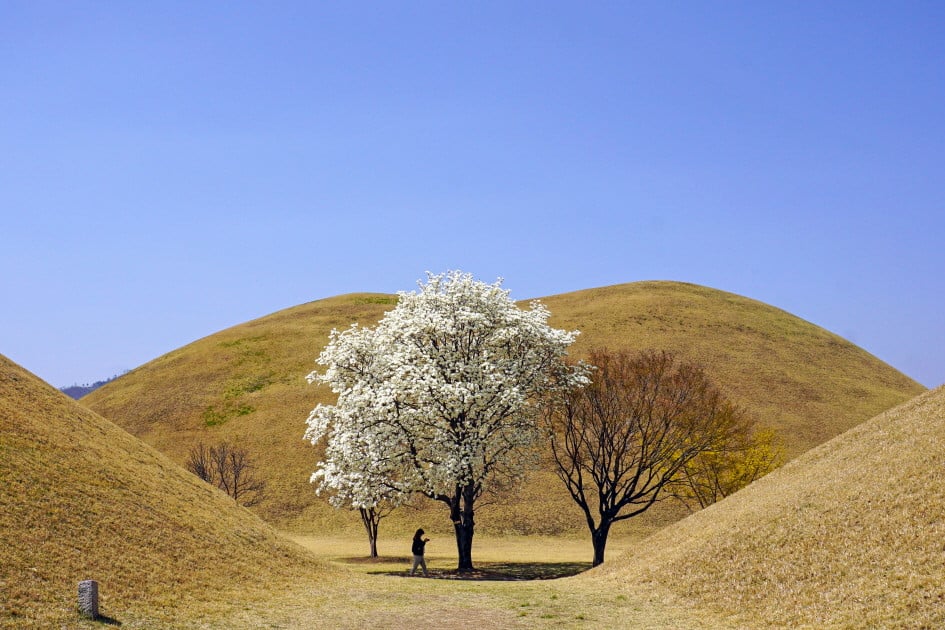
Daereungwon Ancient Tombs has 23 ancient tombs from the Silla Dynasty. Next to this historic site is Hwangnidan Street, a commercial street where traditional Korean houses remain intact. Within a 5-minute walk from the ancient tomb site is Cheomseongdae Observatory, the oldest of its kind in Asia, along with Donggung Palace and Wolji Pond boasting beautiful sceneries throughout the year, particularly at night. Daereungwon Ancient Tombs, Donggung Palace, and Wolji Pond, as well as Cheomseongdae Observatory were designated as UNESCO World Heritage sites in 2000.
- Daereungwon Ancient Tombs: Areas around 31-1 Hwangnam-dong, Gyeongju-si, Gyeongsangbuk-do/ 102 Wonhwa-ro, Gyeongju-si, Gyeongsangbuk-do/ 839-1 Inwang-dong, Gyeongju-si, Gyeongsangbuk-do / +82-54-779-8585
- Hwangnidan Street: 1080 Poseok-ro, Gyeongju-si, Gyeongsangbuk-do
-
Gyeongsangbuk-doBulguksa Temple & Seokguram Grotto
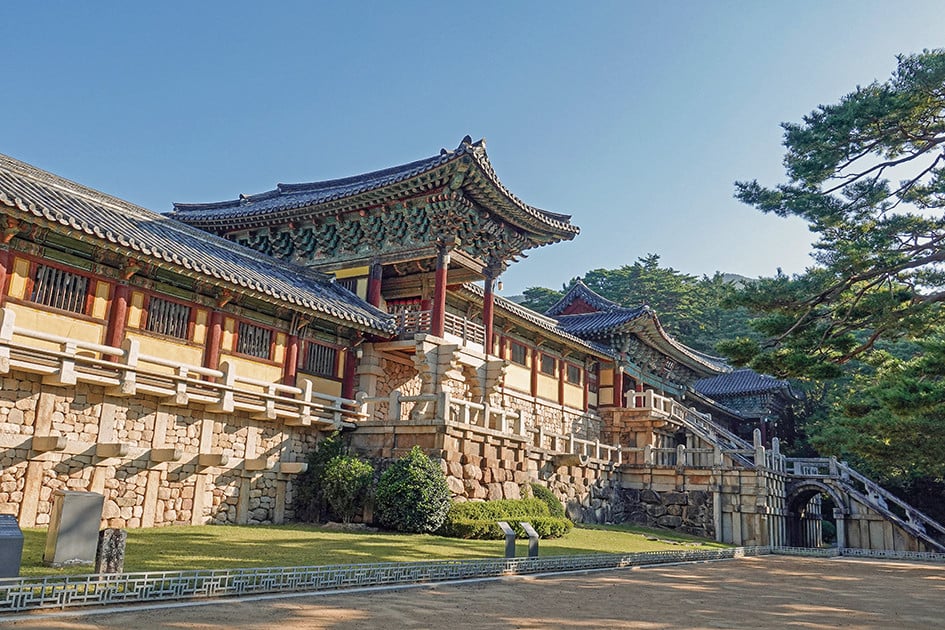
Bulguksa Temple in Gyeongju is a representative tourist destination registered as a UNESCO World Heritage site for the first time in Korea in 1995. Symbolizing the Buddha’s palace, or the ideal Buddhist land in harmony and balance, Bulguksa Temple shows the essence of the Unified Silla culture created by science and aesthetics. Seokguram Grotto looks like a cave as the natural stone dome is covered with soil on top. It is a rare masterpiece created by the profound Buddhist culture, science, and artistic spirit of the Unified Silla Dynasty.
- 385 Bulguk-ro, Gyeongju-si, Gyeongsangbuk-do
- +82-54-779-8585
-
Gyeongsangbuk-doSosuseowon Confucian Academy

As the first Confucian academy in Korea designated as a UNESCO World Heritage site in 2019, Sosuseowon Confucian Academy was the first to receive a royal charter as a private Confucian academy. As a major tourist destination in Yeongju, a city known for Confucian scholars, the academy offers a glimpse into the lives of Confucian scholars. The academy looks somewhat different from other academies as the pine forest in the academy adds to the cozy atmosphere.
- Naejuk-ri, Sunheung-myeon, Yeongju-si, Gyeongsangbuk-do
- +82-54-639-5852
-
Gyeongsangbuk-doMungyeong Dansan Tourist Monorail

Mungyeong Dansan Tourist Monorail runs through a 1.8 kilometer hill section on the northern side of Dansan Mountain (956 meters) at an average slope of 22 degrees and a maximum slope of 42 degrees. The glass windows on all four sides of the cabin offer magnificent views of Baekdudaegan Mountain Range, including Joryeongsan and the Juheulsan Mountains. At the upper station, there is a paragliding site, a rest area, a swing, and a photo zone with a crescent moon-shaped statue.
- 106 Hwalgongjang-gil Mungyeong-eup, Mungyeong-si, Gyeongsangbuk-do
- +82-54-572-7273
-
Gyeongsangbuk-doJuwangsan Mountain & Jusanji Reservoir

Juwangsan Mountain boasts superb sceneries thanks to its beautiful peaks and oddly shaped rocks. It was designated as the 12th national park in Korea thanks to several relics and Buddhist temples, including Daejeonsa Temple, Baengnyeonam Hermitage, and Juwangam Hermitage. Jusanji Reservoir was developed in 1720 to provide water for agricultural use. Red leaf willows and weeping willows in the reservoir add to the beautiful and fantastic ambiance.
- Juwangsan Mountain: 169-7 Gongwon-gil Juwangsan-myeon, Cheongsong-gun, Gyeongsangbuk-do / +82-54-870-5300
- Jusanji Reservoir: 73 Jusanji-ri, Juwangsan-myeon, Cheongsong-gun, Gyeongsangbuk-do
-
Gyeongsangbuk-doJukbyeon Coast Sky Rail

This monorail, which is 11 meters above sea level, runs on a 2.4 kilometer section between Jukbyeonhang Port and Hujeong Beach at 5 km/h. Passengers can see the sea of Uljin, oddly shaped rocks, and columnar joints through the glass windows of the monorail.
- 235-12 Jukbyeonjungang-ro Jukbyeon-myeon, Uljin-gun, Gyeongsangbuk-do
- +82-54-783-8881
-
Gyeongsangbuk-doUlleungdo and Dokdo Islands
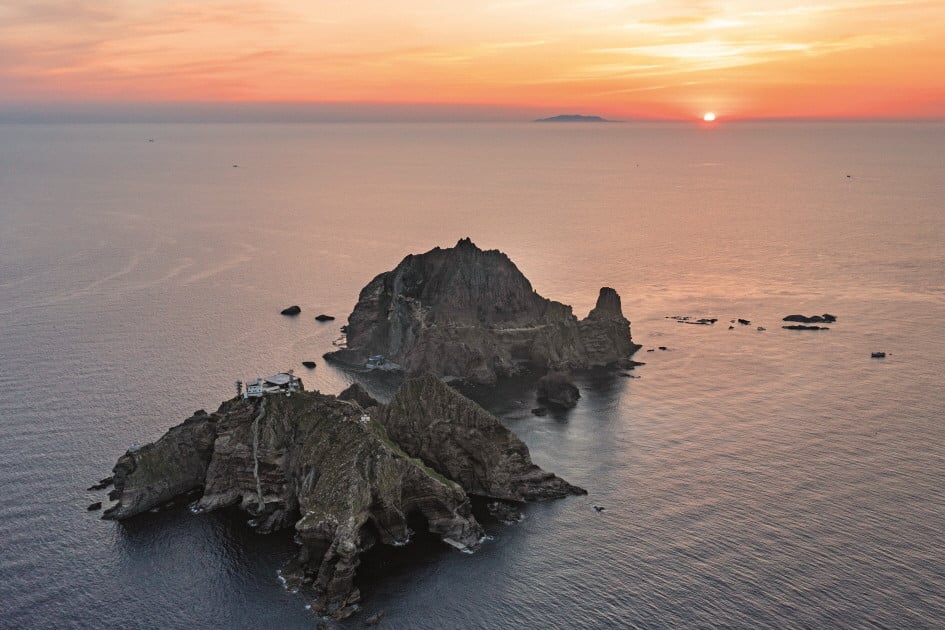
The center of Ulleungdo Island is occupied by Seonginbong Peak (986.7 meters), and Nari Basin to the north. Between the two lies a virgin forest and forest trails. It is a good place to enjoy trekking in spring, water sports in summer, camping and rock climbing in fall, and extreme sports in winter. It takes about 1 hr 30 min to reach Dokdo Island from Ulleungdo Island by sea, and the island can be seen from Ulleungdo Island on a clear day. The two islands were designated as National Geoparks in 2012.
- 66 Dodong 2-gil Ulleung-eup, Ulleung-gun, Gyeongsangbuk-do
- +82-54-791-2191
-
Gyeongsangnam-doGimhae Gaya Theme Park

Gimhae Gaya Theme Park is a cultural complex where visitors can learn about Gaya culture and join experience programs. Popular attractions include Exciting Cycle, where visitors can ride a bicycle at 22 meters above ground; Double Extreme with 72 mission towers; Painters Gaya Kingdom, a non-verbal drawing performance featuring a story about the Gaya Kingdom; and Gaya Palace, where visitors can vividly experience the ancient kingdom's history through an AR program.
- 161 Gaya thema-gil, Gimhae-si, Gyeongsangnam-do
- +82-55-340-7900
-
Gyeongsangnam-doDPIRANG in Tongyeong
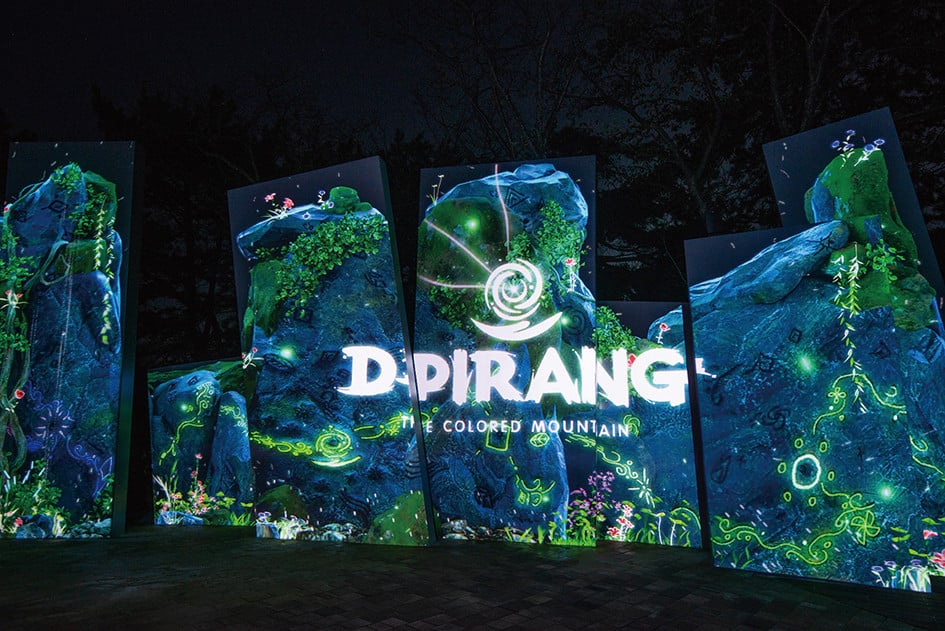
DPIRANG in Tongyeong is a digital theme park created in the Nammangsan Sculpture Park, east of Gangguan Port in Tongyeong. As the biggest and longest night-time outdoor facility in Korea, DPIRANG consists of 15 themed zones along a 1.5 kilometer trail. These zones were created with a story, which visitors can enjoy along with the beautiful nightscape.
- 29 Nammanggongwon-gil, Tongyeong-si, Gyeongsangnam-do
- +82-544-3303
-
Gyeongsangnam-doDanghangpo in Goseong
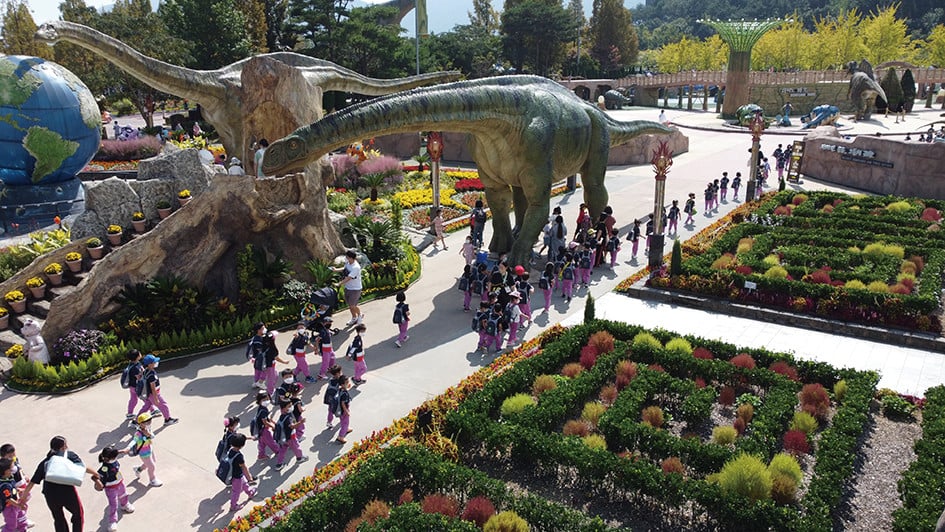
Danghangpo was a battlefield where Admiral Yi Sun-sin was victorious on two accounts during the Japanese Invasion of Korea. The Danghangpo Tourist Area here includes Danghangpo Naval Battle Pavilion, Goseong Natural History Museum, and the Nature Art Park. Visitors can experience various marine leisure sports or stay at a nearby pension house or auto campsite. The area is also the main venue for the Gyeongsangnam Goseong Dinosaur World Expo, the first natural history expo in Korea.
- 1116 Danghangman-ro Hoehwa-myeon, Goseong-gun, Gyeongsangnam-do
- +82-55-670-4505
-
Gyeongsangnam-doYeojwacheon Stream (Cherry Blossoms)

Yeojwacheon Stream is a popular cherry blossom spot in Jinhae, a city known for cherry blossoms. In April, the cherry blossom trees lining the stream look like a flower tunnel. The wooden deck along the stream is crowded with people from all across the country. In particular, the Romance Bridge, a filming site for the Korean drama "Romance (2002)," is a popular photo spot at all times.
- Area around Yeojwacheon-ro, Jinhae-gu, Changwon-si, Gyeongsangnam-do
-
Gyeongsangnam-doGeochang Anti-Aging Healing Land
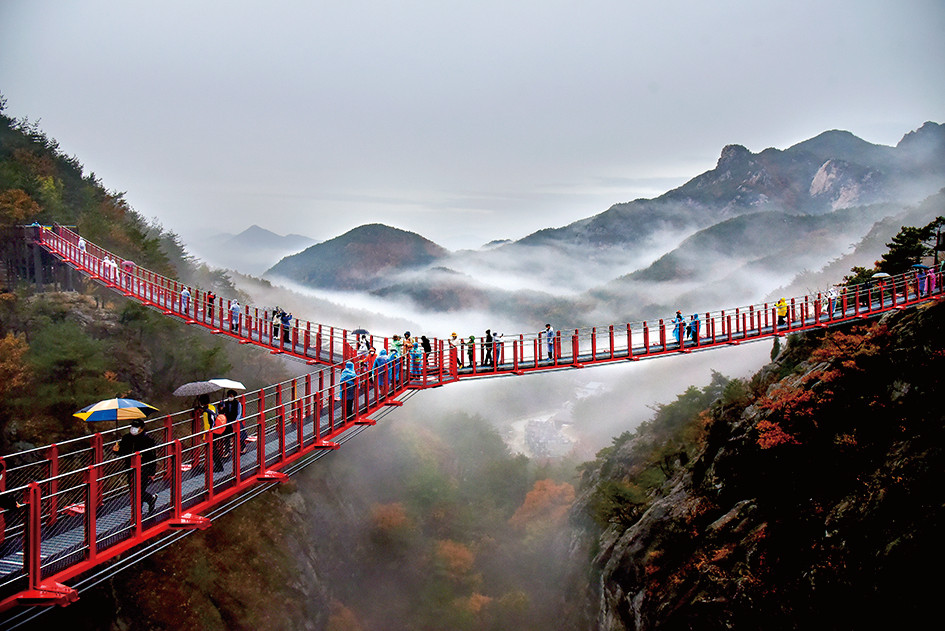
Geochang Anti-Aging Healing Land is a healing space at the foot of Udusan Mountain (1,046 meters above sea level). It is a "one-stop" healing spot with a forest path full of phytoncide, a native botanical garden next to Gyeonampokpo Falls, and accommodation facilities. Plus, the first pier-less Y-shaped suspension bridge in Korea and barrier-free wooden decked roads can be found here.
- 834 Uisangbong-gil Gajo-myeon, Geochang-gun, Gyeongsangnam-do
- +82-55-940-7930
-
Gyeongsangnam-doHwangmaesan County Park
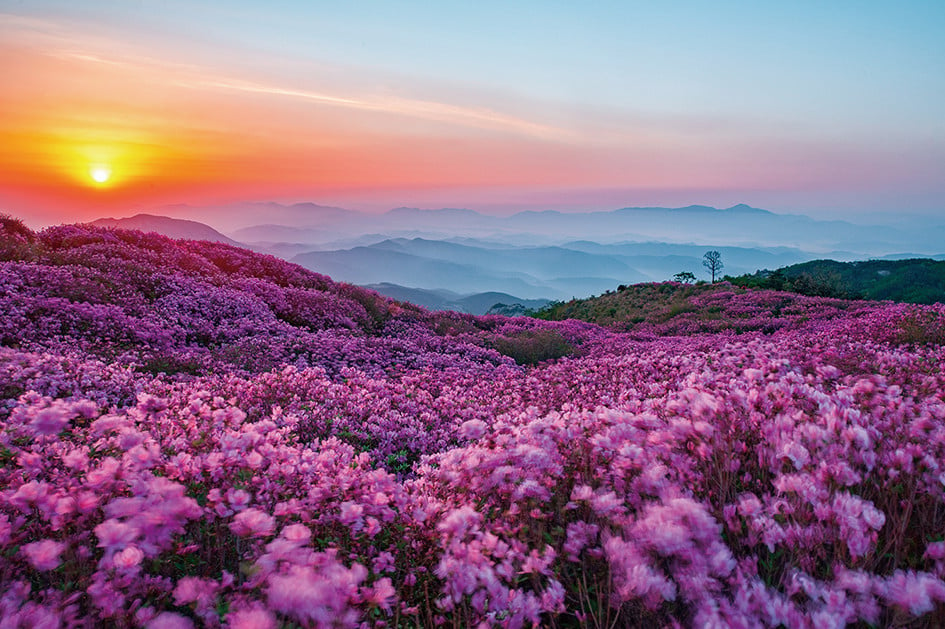
Hwangmaesan County Park’s long period of obscurity allowed this park to retain its valleys, ridges, and plains in great condition. From royal azaleas in spring to summer plains, silver grass in fall, and snow-covered winter, the park impresses with a beautiful view of nature. Campers will find a choir of flowers and silver grass waiting for them at Hwangmaesan Auto Campground. From April to October, the park also offers a great view of the night sky. It was designated as a county park in 1983.
- 331 Hwangmaesangongwon-gil Gahoe-myeon, Hapcheon-gun, Gyeongsangnam-do
- +82-55-930-4753
-
Gyeongsangnam-doJinjuseong Fortress
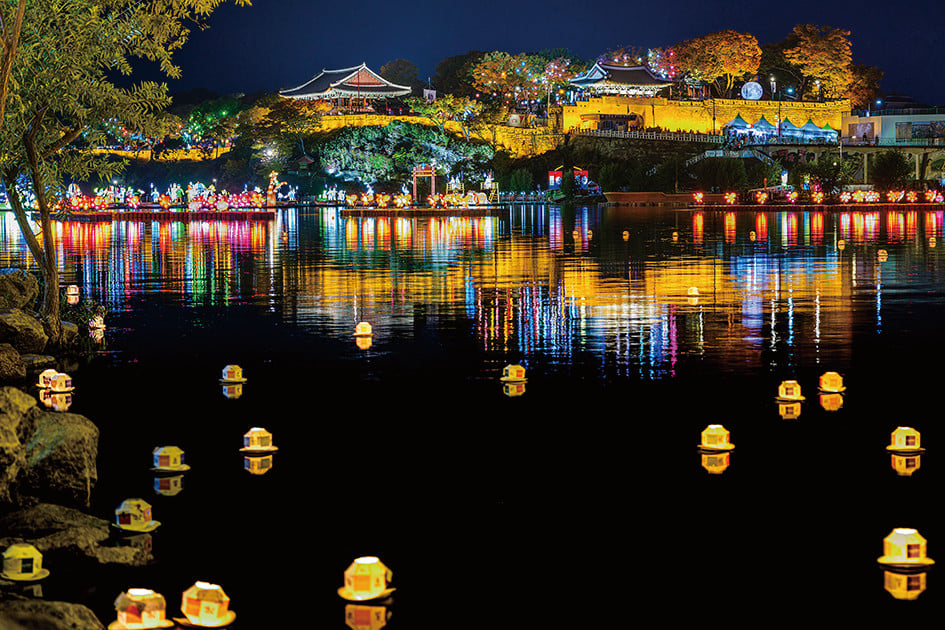
Jinjuseong Fortress is where the history and culture of Jinju are kept alive. Chokseongnu Pavilion, Bukjangdae Command Post, and Jinju National Museum are within the fortress. Jinju Battle is one of the three major battles during the Japanese Invasion of Korea. Jinju is also known for Nongae, who drowned herself and a Japanese admiral by grabbing him and jumping off the cliffs into the Namgang River together.
- 626 Namgang-ro, Jinju-si, Gyeongsangnam-do
- +82-55-749-5171
Jeolla-do Area
-
GwangjuAsia Culture Center

Asia Culture Center is an international cultural and artistic center for the creation, exhibition, performance, and distribution of content. It also is a place for cultural exchanges and has served as an integrated platform where participants from across the world can freely share ideas. Visitors will find the ACC Archive & Research, ACC Creation, ACC Theater, ACC Children, and ACC Culture Exchange, as well as spaces for citizens such as Haneul Madang Outdoor Park, Asia Plaza, and the rooftop garden.
- 38 Munhwajeondang-ro, Dong-gu, Gwangju
- +82-1899-5566
-
Gwangju5·18 Memorial Park

The 5·18 Memorial Park was created to remember the lessons learned from the May 18th Democratization Movement. The park spans 205,000 square meters and is located on the Sangmudae site, which was given for free as a compensation to Gwangju citizens. In particular, the 5·18 Memorial Culture Center serves as the human rights center and as a venue where people can learn about the spirit of the democratization movement. The landscaping here is beautiful, making it an ideal place for citizens to rest.
- 152 Naebang-ro, Seo-gu, Gwangju
- +82-62-613-7911
-
GwangjuYangnim History & Culture Village

Yangnim-dong was the first in Gwangju to open up to modern western culture about 100 years ago. In the village visitors will find the House of Missionary Wilson; an old noble family house; the Jo Ahra Memorial Hall built to commemorate the mother of democratization; Avison Memorial Center to honor Avison, who led a rural movement in Korea; Owen Memorial Hall, in honor of the martyred missionaries; and Jeongyulseong-ro Road to remember Korean composer Jeong Yul-seong.
- Yangnim-dong, Nam-gu, Gwangju
- +82-62-607-2321
-
GwangjuMudeungsan National Park

Mudeungsan National Park was designated as the 21st national park in March, 2013. It encompasses Gwangju as well as Hwasun-gun and Damyang-gun in Jeollanam-do. The highest peak at 1,187 meters is Cheonwangbong Peak. The Columnar Joints in Mudeungsan Mountain (a National Monument) look quite superb. The mountain is covered with azaleas, including royal azaleas, in spring, field touch-me-not and hydrangeas in summer, autumn leaves and silver grasses in fall, and snow in winter.
- 5 Dongsangil 7beon-gil, Dong-gu, Gwangju
- +82-62-227-1187
-
Jeollabuk-doNaejangsan National Park

Called "Geumgangsan Mountain of Honam," this is Jeongeup’s representative mountain as one of the 5 mountains of Honam region with breathtaking fall colors. Notable sites include Byeongnyeonam Hermitage, a site where Chusa Kim Jeong-hui is said to have meditated in; Uhwajeong Pavilion, a legendary pavilion that is said to have flown away with wings; Yonggul Cave, a place of refuge for the Joseon wangjo sillok (Annals of the Joseon Dynasty) and the portrait of King Taejo of Gyeonggijeon Shrine during the Japanese Invasion of Korea in 1592; and the Eunjeogam and Biraeam Hermitages.
- San231 Naejang-dong, Jeongeup-si, Jeollabuk-do
- +82-63-538-7875
-
Jeollabuk-doJeonju Hanok Village

Jeonju Hanok Village in Pungnam-dong, Jeonju is the largest hanok (traditional Korean house) village in Korea with 700 houses. It holds significance in modern housing culture, which started in the 1910s. Important cultural properties, such as Gyeonggijeon Shrine, Omokdae Historic Site, and a local Confucian school, can be found here along with 20 other cultural facilities. Visitors can rent a hanbok (traditional Korean clothing) or experience a hanok stay in the village.
- 99 Girindae-ro, Jeonju-si, Jeollabuk-do
- +82-63-282-1330
-
Jeollabuk-doMaisan Provincial Park

Maisan Mountain (lit. horse ear mountain) is named after the two peaks of Ammaibong Peak (687.4 meters) and Sumaibong Peak (681.1 meters) forming a shape of a pair of horse ears. It is most famous for the tafoni formations, and a collection of nearly 80 stone pagodas formed to the southern side of Ammaibong Peak. Tapsa Temple is one of the "33 of South Korea’s most beautiful temples," and is famous for its 2.5 kilometer-long cherry blossom tunnel in April.
- Areas around Jinan-eup, Maryeong-myeon in Jinan-gun, Jeollabuk-do
- +82-63-430-2503
-
Jeollabuk-doGochang Dolmen & Ungok Ramsar Wetland Village

Home to megalithic culture, Gochang has 1,665 dolmens. In particular, 447 dolmens are registered as UNESCO World Heritages and can be found near Ungok Ramsar Wetland Village. Ungok Ramsar Wetland, which boasts superb natural resources, is close to the dolmen site. Gochang Dolmens & Ungok Ramsar Wetland have been placed on the 2021 Top 100 Destination Sustainability Stories.
- Area around Ungok-ri, Asan-myeon, Gochang-gun, Jeollabuk-do
- +82-63-564-5582
-
Jeollabuk-doGogunsan Islands

Gogunsan Islands are a natural marine park consisting of 63 islands, including 47 uninhabited islands. Some of them were connected to the mainland with the opening of Gogunsan-ro Road, making it a major marine tourist destination on the west coast. Tourists can visit Seonyudo, Jangjado, Munyeodo, and Sinsido Islands on foot. Climbing Gitdaebong Peak on Gwallido Island and crossing the suspension bridge on Bangchukdo Island are popular activities.
- 127 Seonyubuk-gil Okdo-myeon, Gunsan-si, Jeollabuk-do
- +82-63-465-5186
-
Jeollabuk-doArchaeological Site in Wanggung-ri

When cherry blossoms bloom, this archaeological site becomes crowded with people taking photos in front of the Five-story Stone Pagoda in Wanggung-ri, a national treasure. The Baekje Royal Palace Museum, next to the pagoda, consists of five themed exhibition halls to help visitors easily understand the archeological site. The museum holds various events including a night tour of the cultural properties, a moonlight performance, flying wish lanterns, and a starry-night camp.
- 666 Gungseong-ro Wanggung-myeon, Iksan-si, Jeollabuk-do
- +82-63-859-5875
-
Jeollabuk-doBandi Land & Taekwondowon

Bandi Land is an ideal place for a year-round ecological experience. It has the largest insect museum in Korea; a freshwater fish aquarium where otters live; an insect museum with a VR zone; an astronomical science museum where one can observe constellations throughout the year; an eco-friendly playground; a padding pool; and a sledding slope. Taekwondowon offers everything related to taekwondo, including international competitions, experience programs, training, education, and research.
- Bandi Land: 1324 Museol-ro Seolcheon-myeon, Muju-gun, Jeollabuk-do / +82-63-324-1155
- Taekwondowon: 1482 Museol-ro Seolcheon-myeon, Muju-gun, Jeollabuk-do / +82-63-320-0114
-
Jeollanam-doModern History and Culture Space & Mokpo Marine Cable Car

The Modern History and Culture Space in Mokpo shows the region’s modern history, including Japanese colonialism and national liberation, making it an ideal spot to learn about modern history. Mokpo Marine Cable Car provides visitors with the magnificent views of Yudalsan Mountain and the archipelago during the 40-minute round-trip ride, which is 3.23 kilometers in length and 155 meters in height.
- Modern History and Culture Space: 11 Daeui-dong 2(i)-ga, Mokpo-si, Jeollanam-do / +82-61-242-0340
- Mokpo Marine Cable Car: 240 Haeyangdaehak-ro, Mokpo-si, Jeollanam-do / +82-61-244-2600
-
Jeollanam-doEXPO 2012 Yeosu Korea Site & Yeosu Maritime Cable Car

EXPO 2012 Yeosu Korea was the first expo held in the coastal area of Korea. Today, the exhibition site has transformed into a popular marine leisure and tourist destination, offering various programs and events. Opened in December 2014, the Yeosu Maritime Cable Car was the first marine cable car in the country. It spanned 1.5 kilometers connecting Dolsan and Jasan Parks, making it a perfect spot to enjoy sunrises, sunsets and nightscapes from above.
- EXPO 2012 Yeosu Korea Site: 1 Bangnamhoe-gil, Yeosu-si, Jeollanam-do / +82-1577-2012
- Yeosu Maritime Cable Car: 3600-1 Dolsan-ro, Yeosu-si, Jeollanam-do / +82-61-664-7301
-
Jeollanam-doSuncheonman Wetland & Suncheonman National Garden

Suncheonman Wetland is one of the world's top five coastal wetlands and is registered as a UNESCO World Heritage site. Home to a variety of wetland creatures, including endangered species, the wetland boasts a beautiful landscape of vast tidal flats and reed fields. Suncheonman National Garden is the first national garden in Korea and is beautifully decorated with various gardens, including 13 world traditional gardens, 16 themed gardens, and 32 International Outdoor Gardens.
- Suncheonman Wetland: 513-25 Suncheonman-gil, Suncheon-si, Jeollanam-do / +82-61-749-3114
- Suncheonman National Garden: 47 Gukgajeongwon1ho-gil, Suncheon-si, Jeollanam-do 47
-
Jeollanam-doJuknokwon

This bamboo garden has eight walking trails that wind through the refreshing atmosphere of the bamboo forest. Restored literary buildings like Songgangjeong and Myeonangjeong Pavilions testify to Damyang’s history as a center of gasa poetry culture in Joseon period. There is also a jukro tea room, made with green tea grown from dew falling from bamboo leaves. The nearby Hanok Experience Center offers lodging for visitors. From the observatory, visitors can get a great view of Damyang’s other attractions like Gwanbangje Forest and Metasequoia Tree Road.
- 119 Jungnogwon-ro Damyang-eup, Damyang-gun, Jeollanam-do
- +82-61-380-2782
-
Jeollanam-doSangsaeng Trail & Pine Trail

Sangsaeng Trail, close to Cheoneunsa Temple in Gurye, consists of the Nurim, Nanum and Bodeum Trails. Here you will find eco-friendly trails in consideration of wild animals (including otters) and seven different observatories. The Pine Trail starts at Iljumun Gate and goes all the way to the vicinity of Cheoneunsagyegok Valley. The trail is an ideal place to enjoy the fresh forest air and wonderful views of Cheoneunje Reservoir. Cheoneunsa Temple was the filming site of the Korean drama "Extraordinary Attorney Woo."
- 209 Nogodan-ro Gwangui-myeon, Gurye-gun, Jeollanam-do
- +82-61-781-4800
-
Jeollanam-doSeomjingang Train Village in Gokseong

Seomjingang Train Village is a train-themed park developed from the former Gokseong Station and the discontinued Jeolla Line. The village is home to Dreamland amusement park; the goblin-themed Yosul (Magic) Land; Chichippuppu Playground, where visitors can learn and experience railway history and culture; an animal farm; a VR zone; and a media art exhibition hall. Visitors can also ride the railbike or the steam locomotive.
- 232 Gichamaeul-ro Ogok-myeon, Gokseong-gun, Jeollanam-do
- +82-61-360-8443
Jeju-do Area
-
Jeju-doSeongsan Ilchulbong Tuff Cone

Seongsan Ilchulbong Tuff Cone is a 180 meter high tuff cone (a type of hydro-volcano) created by an underwater explosion about 5,000 years ago. It has a bowl-shaped crater as well as various internal structures along the coastal cliffs, making it a UNESCO World Heritage site and a Global Geopark. Also, the tuff cone is the best sunrise spot on Jeju Island, and visitors can see the sun rising above the horizon of the blue ocean.
- 284-12 Ilchul-ro Seongsan-eup, Seogwipo-si, Jeju-do
- +82-64-783-0959
-
Jeju-doHallasan National Park

Hallasan Mountain is at the southernmost tip of the Korean Peninsula and is the highest mountain in South Korea. Home to over 1,800 alpine plant species, the mountain was designated as a UNESCO Biosphere Reserve, World Heritage site, and Global Geopark because it has all the characteristics of the volcanic Jeju Island. There are seven climbing courses, two of which (Seongpanak and Gwaneumsa courses, reservation required) bring visitors to Baengnokdam Crater Lake.
- 2070-61 1100-ro, Jeju-si, Jeju-do
- +82-64-713-9950
-
Jeju-doJeju Olle Trail

Jeju Olle Trail was built for an eco-friendly long-distance walking tour around Jeju Island. The 437 kilometer trail consists of 27 courses connecting the island's villages, major tourist attractions, and natural and cultural resources. One can enjoy the beautiful nature and culture of Jeju Island while walking in every nook and cranny. The Olle Pass App provides useful information about Jeju Island as well as the trail.
- All over Jeju-do
- +82-64-762-2190
-
Jeju-doUdo Island

Udo Island ("ox island") was known as Soseom or Sweseom (also meaning "ox island") since the old days because of its shape, which is said to resemble an ox lying down. It is the largest island in Jeju’s 63 subordinate islands. Being a volcanic island, it is blessed with fertile soil, gentle slopes, and abundant fishery. It also attracts nearly 2 million visitors each year, who come to the island to see the Eight Sights of Udo and nature.
- Udo-myeon, Jeju-si, Jeju-do
- +82-64-728-4329
-
Jeju-doBijarim Forest

As the world’s oldest nut-bearing Torreya forest with approximately 3,000 trees, Bijarim Forest is a Natural Monument of Korea. The forest is a popular spot to have a relaxing experience because visitors can enjoy forest walking while breathing in the fresh phytoncide in the forest. Various trees and rare orchids can be found here, including maple, silver magnolia, vanda falcata, and East Asian thrixspermum. Visitors can also take a comfortable walk along the soft volcanic clay trail.
- Area around San15 Pyeongdae-ri, Gujwa-eup, Jeju-si, Jeju-do
- +82-64-710-7913
-
Jeju-doJeju Stone Park

Jeju Stone Park is a comprehensive cultural and ecological park located within Gotjawal in Jungsangan, a mid-mountain region on Jeju Island. The park features different themes, such as Jeju's mythology, stone, folklore, and culture. There are attractions such as Jeju Stone Museum, the Obaek Jang-goon Gallery, and the Path to Legend. Visitors can also see Obaek Jang-goon stone statues and a traditional Jeju village with a horse mill and 50 thatched houses, giving a glimpse into what a local village looked like.
- 2023 Namjo-ro Jocheon-eup, Jeju-si, Jeju-do
- +82-64-710-7731





